Bid Strategy
Rise above the vast majority of your competitors, who try to reduce strategy to a series of templated processes that actively prevent thinking or produce only tactical thinking, at best.
Be a master of genuine strategic
thinking.
ACADEMY KNOWLEDGE BASE

By Jordan Kelly
•
March 27, 2025
How do you slash the cost of bidding without bringing about a correspondent drop in submission quality? I’m about to present you with nine suggestions which, when implemented, will not only save you time and resources (read: budget) but will, in fact, streamline the process and produce a superior end product. Fair warning: Some are […]

By Jordan Kelly
•
March 19, 2025
One particularly common mistake I see made from the level of bid operations right through to senior management, is to confuse strategy with tactics. These are not interchangeable terms and they’re certainly not interchangeable concepts: Strategy informs tactics. Two different things. Two different functions. Two different processes. A basic, high-level definition of “strategy” might be: […]

By Jordan Kelly
•
March 2, 2025
Whilst the first and most immediately obvious step in improving poor articulation performance in a submission is to subject it to a rigorous editing process, there’s almost always a greater issue at play. That issue is the largely non-client-specific (at least, not convincingly specific) and generally “same, same” nature of the content . . . the supplier-focused “brochureware” that results from an unclear, uncertain or absent bid strategy. Or an insufficiently documented one. In almost every bidding enterprise I’ve worked with, writers have previously had to either rely on little more than workshop notes, together with existing generic content, to inform their response sections. For the most part, they’re forced to interpret and piece together in their own minds, the intended underpinning strategy and guiding themes supposedly resulting from planning sessions. In many cases, they’re faced with making up the content themselves without any guidance. It’s critical to recognise that producing a client-focused submission requires more than a simple emphasis on writing techniques and editing processes (e.g. flipping sentences around to commence with the client organisation’s name versus the bidder’s). If writers are given a comprehensive and user-friendly bid strategy blueprint to guide them, and along the way their outputs are nurtured by the appointed strategist within the group, their writing should, by default, adequately convey the bid strategy. And it should do so in a client-focused manner.

By Jordan Kelly
•
February 24, 2025
If – as pursuit leader or bid strategist – you haven’t checked off the following key preparatory measures before your bid writers put fingers to keyboard, you greatly risk falling into the standard default position i.e. section authors producing thinly-disguised "brochureware", and others producing what comes across as cut-and-pastes from a product or procedures manual. So ensure you can answer fully in the affirmative before you set your section authors loose on their tasks: Have you produced a comprehensive, high-readability, overarching strategy document? Have you produced writer’s guides – based on the above – for each major section or Schedule? Before finalising the above, have you shown these to several of the writers to ensure they are user-friendly from their perspective? Have you held a collective briefing session i.e. between the strategist, one or two other key participants in the strategy workshops, and the section authors i.e. to verbally explain the strategy and how it underpins or influences their sections? Have you returned to each section author, individually, following this initial collective briefing, to ensure they understand and can follow their respective writing guide? And that they have aligned the content of their writing guide with their section content plan? Does any section author feel he or she needs more supporting information that they need help to obtain? These are the key steps to ensuring bid content that reflects, and adheres to, a central, cohesive, underpinning strategy.

By Jordan Kelly
•
February 22, 2025
If a company struggles to differentiate its product or service from that of its competition, the first element of any corrective strategy should be to seek to deepen the level at which it understands its prospects and its clients. Not all companies do this well. Most don’t. Why am I confident to make such a sweeping statement? I see the evidence on a daily basis as a bid strategist and writer, and as an evaluator and bid coach. When I take on a new client, almost without exception, that organisation’s previous bids, tenders and proposals literally shout self-centricity. Those that think they don’t, are always surprised to learn just how much further they could go in taking a genuinely client-centric approach and, in the process, de-commoditising themselves far more effectively. Symptoms of Self-centricity Let me demonstrate how a self-centric perspective shows up in a bidder’s documentation. I’ll focus on just one part of a bid document — the Executive Summary . Here are two examples that literally whack an evaluator between the eyes with this syndrome on the bidder’s part: Example One: ‘We’, ‘Our’, ‘Us’ I once evaluated a bid, the Executive Summary of which featured the seller’s name no less than 17 times in a short series of introductory paragraphs. Don’t laugh; a large percentage of these key front pieces end up with the seller’s or service provider’s name (or ‘we’, ‘our’ and ‘us’) at the beginning of most paragraphs. This indicates a lack of knowledge, understanding and caring about the client organisation and its issues and priorities, as well as a lack of listening skills and a probable low “care factor” on the part of the bidder. The propensity for a bidder to communicate in such a way that the world revolves around them i.e. the supplier or service provider, rather than around the prospect/client makes it obvious to the client and its evaluators that the entire working relationship is likely to evolve in this same, very predictable, direction. This — in the client’s mind — places that bidder in the same self-focused category as the majority of its competition. And this, in turn, relegates it to a largely undifferentiated status. Example Two: Framing Strengths Most Executive Summaries focus almost exclusively on getting across the bidder’s strengths. Some do go slightly further, communicating the purported competitive uniqueness of the offering. Few, however, investigate and explain the specific relevance of these to the client and its operating environment. And without doing so, they come across as arrogant, lazy or both. It’s also a wasted opportunity. Regardless of any information requests made in a client’s tender call documentation, the client’s interest in the service provider centres around the relevance of that information to its own organisation, its own priorities, its own issues and how all these will be satisfied in any potential contract with the bidder. Let’s come back to de-commoditisation. The degree to which your company can demonstrate a relevant and competitively superior understanding of the client organisation, and how your strengths and the aspects of your offering uniquely position you to solve the client’s problem and/or achieve that organisation’s desires, is the margin by which you’ll be out in front of your competition. In turn, the extent to which you are out in front of your competition (on elements of your offer other than price) is the extent to which you have successfully differentiated your company and your service or solution. In turn, the extent to which you’ve differentiated your proposition, is the extent to which you free yourself from the price trap into which most operators in heavily commoditised industries otherwise fall.

By Jordan Kelly
•
February 22, 2025
In a challenge workshop I held recently for a meeting of the senior marketing and sales personnel of a multi-national in the broader infrastructure and engineering space, I was told (I’m paraphrasing): “We struggle with converting client needs into end benefits. We’re good at communicating features, but not extrapolating these into project-relevant end-benefits.” Now, notwithstanding that the industry in question requires substantial use of technical specifications and other feature-related detail in submissions to its (equally “technical”) client audiences, she’s on the money: these nonetheless need to be converted to actual “benefits”. There’s a simple exercise for arriving at the benefits of a feature, without losing the necessary details of the feature required for the satisfaction of the client-side’s technical evaluators. Here’s the basic version: Throw up three columns onto your whiteboard. Head up the left-hand column, ‘ Feature ’ – and articulate the key elements of the feature. Head up the middle column, ‘ Relevance to Which Specific Project Objective ’. Lastly , head up the third column, ‘ How It Helps Achieve That Objective ’ . Again, this is just the basic version; more extrapolations are required to take this all the way through to any form of “win theme” contribution. But it’s a great start.

By Jordan Kelly
•
February 22, 2025
One of the most fundamental mistakes bidders make when answering a call for Expressions of Interest or Requests for Proposal, is submitting a response that’s full of unsubstantiated claims (as website copy and general marketing materials commonly are). Too often, a statement is made in an EOI or RFP response that offers no substantiation, no demonstration of its accuracy. It appears the evaluation committee is simply expected to accept the claim at face value. Yet the evaluators would not be doing their job if they do . . . and you, as bidder, haven’t done “your” job if you expect them to. Further, how can an evaluator award you selection criteria-related points when you answer a question with an empty, unproven claim? Respondents and their writers should ask these questions as they plan and write their answers: What is the proof that this is true / fact? Offer adequate and genuine substantiation – whether of a “third party” nature or by providing some form of provable quantification. Table a statistic, for example, and state the source (which should be a reputable body recognised either by your industry, their industry, or the business sector at large). What is the credibility of this information? Many bidders include lightly edited, thinly-disguised versions of the same material they include in their marketing material or on their websites. The credibility of this information is generally nil, since it is based on opinion-based claims the bidder is making about its own service or product. To be authoritative, you must be able to show that any opinion is, in some form, supported by a credible third party e.g. by accreditation. Why is it relevant / critical to the client / customer organisation? Don’t just state facts or table data and leave it to the evaluation committee to determine their relevance. Explain why, in the context of this bid, you consider that fact or datum important. In that way, you strengthen the support those inclusions loan to your proposition. If, on the other hand, you neglect to do this, you will have potentially wasted that opportunity. Worse still, the evaluator may misinterpret the connection you intended him or her to make. With regard to the answer generated by the above question, what is the proof point of this high-relevance criticality? A savvy bidder will offer a double layer of substantiation. First, it will offer proof of a claim, and/or demonstrate that the claim is proven or provable. Then, after drawing the relevance of that information to the client organisation’s specific needs or challenges, the bidder will go on to demonstrate and/or quantify the benefits that will result from the evaluator making a decision in the bidder’s favour, based on this information. In summary, table proof that your claim is true (not just your opinion); provide some authoritative indicator of third-party concurrence; make it relevant to the client and, in turn, prove this relevance. Finally, if possible, quantify the benefits to be gained by taking the action that your claim suggests should be taken.
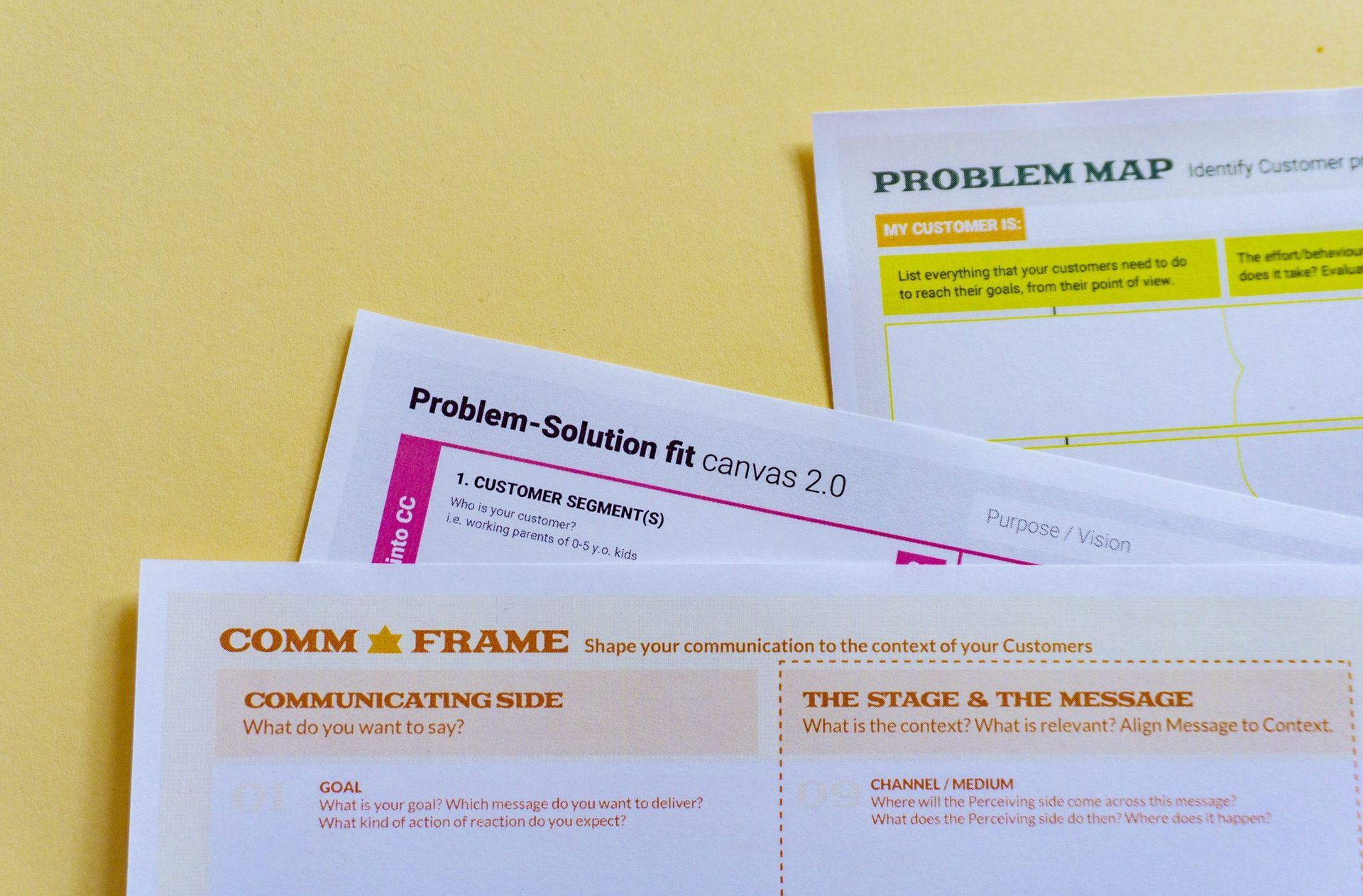
By Jordan Kelly
•
February 22, 2025
Many organisations place a heavy focus on developing a raft of heavily prescriptive templates, in the belief that this will produce comprehensive and well-thought-out bid "strategy". In other Pursuits Academy articles, I articulate, in detail, precisely why it is that quality strategy (in fact, why real “ strategy”) cannot be produced by templates. Now, in this upload, I will make the additional observation that “over-templatisation” actually de-motivates workshop participants and others looked to for strategy input. There’s an irony at play in many B2B organisations: While at the upper levels of strategy direction, someone is busy creating more templates and injecting existing templates with more fields to be filled in, the root of the problem (i.e. poor quality strategy) is the templates themselves . And it’s not only the fact that these templates (no matter how detailed) don’t produce quality (or even genuine ) strategy, it’s also that their usage fails to enthuse and compel people to avidly embrace the whole (as in, the whole of the ) strategy development process . Are You Addressing the Root of the Problem? Try this possibility on for size, as regards your own organisation: Are you too focused on making your processes more involved and more complex, when the immediate problem is actually that you’re struggling to get your client-facing personnel (i.e. business development and sales representatives) to use the existing processes/templates effectively and enthusiastically? The alternative is to understand that the mining of critical client-facing insights and information, and the subsequent formulation of bid strategy, is not – in general – well-served by templates . . . or, at least, not past a certain, still reasonably elementary, stage in the process. True strategy is fluid, and results from free-flowing (albeit tightly directed) investigative conversations that range both deep and wide . . . the direction of which cannot be determined by a template approach. Let me conclude with a (true) story from my early days specialising in this field. The Australian head office of a multinational IT giant had spent some hundreds of thousands of dollars on implementing new software that provided a range of templates – predominantly for the capture of information gleaned by BDs following any meetings they had with potential customer organisations. An Expensive White Elephant Although the use of these templates was mandated, the BDs used these minimally, if at all. (They considered them the ruination of an otherwise nice afternoon in the company of a major customer or prospect.) After months of unsuccessfully cajoling the BD team into embracing the software a little more enthusiastically, I was called in by the company . . . initially to add to their efforts to gain traction for the use of the program (which, by this stage, had turned into an expensive white elephant). I’ll cut the story short, by saying that my approach to the problem involved closely evaluating the modus operandi of the various key BD team members, in order to determine the role each was best suited to playing in the gathering and documentation of customer insights, the supplementation of these with secondary research, and the conversion of all these information types into actionable strategy. This approach worked. Why? Because (a) it reflected how real strategy is developed, (b) it inspired the team members to think through the contribution of their individual roles and make strategic use of their opportunities, and (c) it allowed each individual to operate in a manner conducive to their own personalities.

By Jordan Kelly
•
February 21, 2025
The No. 1 way to strike a consistently high win rate with your bids and high-stakes proposals is simply this: Make it a top priority to understand why you won, or why you lost, all those that came before the one you’re currently working on. Clearly, the client-delivered debrief is the most obvious way to achieve a first-hand understanding of whether and where a submission hit the mark, or whether and where it didn’t – and (also, hopefully) how it stacked up against the competition. The value of the information and insights obtained from such an exercise, however, is almost always directly proportionate to how effectively each side prepares for, and participates in, the debriefing session. The “trick” to using the debrief as your “secret weapon” in your quest to consistently pip the competition at the post, lies in extracting high-potency intelligence; frank, no-holds-barred, painstakingly detailed commentary . . . “news you can use” to mastermind quantum leaps of continuous improvement in your processes. Even when you’re already submitting winning bids. Assumptions Make Dangerous Allies Don’t let a successful bidding track record blind you to the merits of working hard to extract valuable feedback on all aspects of your most recent bid: To repeat success wilfully , you must know exactly what created it. Assumptions make dangerous allies. In my opinion, one of the greatest quotes of all time was uttered by Napoleon Bonaparte, when he said: “The greatest danger occurs at the moment of victory.” When being enlightened as to why it won, many a jubilant winning team has had its proverbial bubble burst by learning that it was a completely different factor that won it the bid, than that which it had assumed. (It goes without saying, of course, that if you’re on a losing streak you have an even greater incentive to find out all you can from a debrief, to help steer you towards success.) How to avail yourself and your team of a high-value debrief, then? Corral the Horses: You Want It from Their Mouths (Not Third-Hand) First and foremost, you want the feedback to come from “the horses’ mouths” i.e. the members of the tender evaluation panel . . . not second-hand, from personnel who weren’t directly involved in the evaluation, and who (worse still) may never had read your submission in detail. Getting the right people at the debriefing table is critical. You’ll greatly increase your chances of this by targeting your (formal) email request/s to the most senior client organisation representatives, conveying the importance, to you and your team, of the debrief. If applicable and appropriate, ensure the probity auditor of the bidding process is included in, or cc’d in on, these communications. Don’t try to achieve this objective through phone calls, or “whipped off”, informal emails. This risks downplaying the significance of your request and of the debrief per se. Don’t be timid on this point. You should (politely, of course) state that you’d appreciate the client-side debrief participants include those directly involved in the evaluation process. This transmits the message (in an acceptable manner) that you’d appreciate the client-side preparing adequately for the debrief, as you’ll be expecting accurate and detailed feedback. This latter point is particularly important. In the case of a major project, it could be four or five months post-decision before a debrief is held. Thus, the evaluators need to be prompted to refresh themselves with regard to the detail of your bid documentation. End With the Start in Mind Secondly – plan, plan, plan. To turn an old saying on its ear, when planning your own approach to the debrief, end with the start in mind. That is, set out to learn as much as you can about the strengths and weaknesses you exhibited in the current bid, in order to start out on a stronger footing with your next bidding performance. When I’m preparing a bid team to attend a submission debriefing session with one of its prospect or client organisations, I work with it to do what I’m about to recommend to you here: (1) Plan your approach and questioning outline in the same detailed manner as you’d approach preparing the outline for a bid strategy formulation workshop,. (2) Exercise both tact and strategy when framing the questions. (3) Practice “proactive” listening skills – and exhibit an open mind and broad shoulders. Let’s address these three points in turn. Mapping Out Your Approach You don’t enter into a bid strategy workshop with no prior planning whatsoever, so why would you enter into a debrief with no pre-determination of the desired result . . . and without a roadmap to exercise your optimal level of influence over the quality of output? If you’re thorough in identifying all the areas in which you want detailed feedback, chances are you’ll come up with more questions than you can ask in the time allotted for the debrief. My advice is to prioritise these in accordance with the degree of value they afford you, in terms of: (a) (if your bid lost this time) winning another similar bid or another bid with the same client, or (b) (if your bid won ) performing in a manner throughout the contract, that will ensure you of success in your project/product/service delivery, and favourable and robust positioning for future business with the client in question. Framing the Questions To derive accurate, detailed information, and the frankness of client commentary that might otherwise have proved too uncomfortable for the parties, you must frame your questions sensitively and productively. One of the most important considerations you can make in mapping out your questions, is to be cognisant that there are three categories of information in any given “debriefing” environment and the associated dynamics: 1) Conscious and willing to share. 2) Conscious and not willing to share. 3) Unconscious, so can’t share. It’s easy to get the Category 1 information. That’s what the client has prepared and has come there ready to offer. Category 2 is tricky . . . but this information is particularly valuable. Here’s how to extract it – as painlessly as possible: Minimise the evaluation team’s discomfort by framing your questions, and pre-establishing the tone of the evaluators’ responses, such that observations are delivered as constructive criticism. Make it easy and comfortable (or as comfortable as possible) for the client-side executives to speak their minds. Let's take, by way of example, the situation whereby a bid team that tabled a losing bid is dealing with one of the trickiest issues of all: whether or not they lost on price. And whether or not the client is prepared to admit it. Here's how that bid team might frame its approach in the client's debriefing session: “Obviously, when we prepare our estimates, our pricing is based on delivering the optimal result in every aspect of the project. It follows then, that in some projects there might be a connection between price and what we believe it will take to deliver that optimal result. “It would be valuable for us to understand, from your perspective, how valuable (or otherwise) you feel that extra guarantee of satisfaction is, when we’re up against someone that comes in with a lower price.” Category 3 requires a different type of prompt. In this example, the bid team is endeavouring to determine where it hit the right hot buttons and where it didn’t: “We carried out extensive background research into this project and your stakeholders’ issues, and we worked hard to pinpoint what appeared would be your top concerns and priorities. Then we worked our methodology and general approach around these. “Could you give us some specific feedback on where we were correct with our assumptions? And could you also give us some indication of where we focused on things that weren’t as important to you?” You may or may not agree with these hypothetical questions. Perhaps you’d craft them a little differently. That’s fine. The point is, it’s critical to determine the specific insights you’re after, and each of the aspects of the bid in which you want those insights, and then to frame up some questions that will draw out the most instructive answers, in the most productive manner. Testing the Answers As politically incorrect as it may be to write this, there will be times (especially in the case of a loss) when you feel you want to be “extra sure” the feedback you received was “kosher”. I’m sure I don’t need to elaborate. The way to deal with this is to find a polite and acceptable way to ask the same question from more than one angle and, preferably, to ask it of more than one of the panel members. Listening & Implementing Be sure to exhibit strong listening skills , demonstrating your appreciation of the insights being delivered and ensuring your full understanding of them (this client will now be less than impressed if your future proposals ignore the advice they’ve just imparted). And take detailed notes. The more detail you can capture from the client team’s answers, the more useful direction you can provide back to your organisation when you debrief the broader team back at home base. (You do undertake this all-important second-level de-brief, of course, don’t you? ) In conclusion: Bid teams often claim clients don’t give them the valuable answers and feedback they’d have liked. I say: The responsibility for asking quality questions is yours i.e. the bidder’s . Likewise, the responsibility for milking the most value out of the information you gather from a debrief, is yours also. Follow these fundamentals and you’ll be well ahead of the competition when it comes to positioning your organisation for a win next time (if you lost this time) or, if yours was the winning bid, a win by a larger margin of certainty next time.

By Jordan Kelly
•
February 21, 2025
A "checklist", in the context of a document, usually limits its embrace to non-subjective, cut-and-dried elements of inclusion or accuracy. However, it’s equally important – in the case of a big-ticket bid – to step back and view your content from a broader perspective, to assume nothing, and to ensure your writing style and/or structure packs a decent punch. Here are some key such ‘macro-level’ checkpoints: Does your piece reflect that you’ve followed a cohesive and well-structured, or at least well-thought-out, content plan ? Whether you’re a seasoned bid writer or a newbie, you should plan your work and stick to your plan. Check your “facts”. There’s no room for the inclusion of assumptions or the reliance upon unverified third-party statements or claims in your EOI and RFP responses. Make sure your first paragraph – as the “introduction” to your piece –is strong, punchy and provides a compelling entry point to the rest of your material. Draw out the project-specific or contract-specific relevance and meaning of anything you write. Don’t leave it to the evaluators to connect the dots. Ensure you’ve communicated the benefits associated with the features of your technology or service ( not just the features ).

By Jordan Kelly
•
February 21, 2025
Here are six absolutely fundamental, editing-stage questions to ask yourself and your team, about the draft of your Expression of Interest (EOI), Request for Proposal (RFP) or other form of bid or sales proposal: Does your proposal or submission demonstrate an in-depth understanding of the prospect’s world? Does it demonstrate that deep, multii-faceted, multi-source research was done into the (e.g. historical/political) backdrop of the procurement? Is your proposal or submission genuinely client-focused , framing all information about the bidder in the context of the client’s interest? Is your submission bold and confident in its articulation of its conclusions, but does it stop well short of arrogance? Is it authoritative yet not condescending? Does it demonstrate/substantiate all of its claims?

By Jordan Kelly
•
February 21, 2025
Here are the first five of the 10 mistakes that I have most frequently, across the course of my 12 years as a bid strategist and writer, witnessed bid teams making. Each one of these practices is, in its own right, damaging to a bid’s success. Collectively, however, they as good as guarantee that the […]

By Jordan Kelly
•
February 19, 2025
When you tout "the (your company’s name goes here) culture" as some sort of meaningful competitive differentiator, do you go on to explain exactly w hy – in a manner that is less generic, more specifically and commercially meaningful to your prospect client or customer organisation? Or do you offer some potted fluffy like “our can do / customer-focused / inclusive / collaborative (fill in the blank) culture” and expect the customer to be just as jazzed as you are? Or, worse still, perhaps you simply assume the prospect organisation somehow knows what you mean by your great culture? One of the first ditties I ever coined when I developed the bid strategy niche, in order to convince my clients of the need for a 100 percent client-centric approach to everything, was this: The only thing the client needs or wants to know about YOU, is what’s directly relevant to HIM (or her). And, of any facet of your business that you offer up as in some way of benefit and value to the organisation the business of which you’re pursuing, "culture" – arguably – is one of the toughest sells. Harden It Up & Make It Relevant So you need to harden it up . . . you need to explain this “culture”, then qualify its relevance, and quantify its value. You must provide a client-focused, compelling explanation of the depth and breadth of its relevance to achieving the client’s goals and solving their challenges. In short, don’t leave “culture” as some simplistically-expressed, generic (and supposed) competitive strength. Your starting point, if you’ve never put words to it before, would be to develop a “USP” (the ubiquitous “Unique Selling Proposition”) purely for your culture . For example, I have one client organisation whose leadership and people view their culture as perhaps their strongest competitive differentiator. To them, it underpins every aspect of peak performance and competitive superiority it offers its marketplace. But there is an assumption t hat exactly what that culture is, is to some degree evident through its branding, in-person communications, and proposals. Nowhere have I ever seen any defining statement that encapsulates the essence in any tangible way. Thus, when its sales force refers to it, and its bid writers use it in their proposals, it comes off as sheer “brochureware”. And that is sad. Because the company does, in fact, have an outstanding culture – and by virtue of that culture, provides outstanding service to its nearing-global customer base. Here’s An Example If I were asked to distil the culture into a couple of core concepts that are meaningful at a generic level, at least, to all clients, then – without thinking too deeply – I’d probably say: “It’s a culture in which all employees readily and willingly assume full personal responsibility for the customer’s / company’s required / most desired outcome.” Or (although I prefer the above, simpler version): “It’s a culture in which an individually-empowered, flat structure is used to the best advantage of both the company and the customer.” It’s the ultimate “can do” culture – but that buzzword-based concept isn’t particularly meaningful. If you consider your “culture” really something worth holding up as an offering of value, a genuine and meaningful competitive differentiator, then you need to work to articulate that culture just as clearly as in the above examples. From that point, it needs to be aligned with each of the specific prospect’s current or persistent challenges and goals. This is particularly so against the backdrop of a corporate sector within which almost every website features brochureware-style claims like “our people are our greatest asset”. If you identify the client-specific and client-relevant benefits of your “culture” and articulate these effectively – from the perspective of the client – in your business development and pursuit-based communications, you’ll stand head and shoulders above any competitors banging on about “our people” and “our culture”. Conversely, if – as in the case of my above-case-studied client – you have a genuinely great culture, it would be an equally great shame if you never got the chance to provide physical demonstration of what that means to your prospective customers or clients.

By Jordan Kelly
•
February 19, 2025
The Bard and His Pearls of Wisdom . . . As Applied to Bid Strategy Shakespeare would have made a brilliant business development operative (‘BD’) or bid strategist. As a writer, I could live and breathe the writings of Shakespeare. But what few people today appreciate is the sheer strategy behind the musings in his […]

By Jordan Kelly
•
February 18, 2025
"Primary" information is that which is obtained first-hand . . . straight "from the horse’s mouth" or direct from the source. This is the information you derive and capture from conversations with customer representatives, user group members and other stakeholders. It’s your direct observations and insights. “Secondary” information is that which you source already formed, published or otherwise documented – “ready packaged”, so to speak. It’s the policy documents, the website content, the white papers, the media coverage, the consultant’s reports (i.e. if not commissioned by you). Make extensive use of both. It is usually best to precede your primary information endeavours with collection of secondary information. This provides an informed starting point and allows you to ask quality questions of your prospective client or customer.
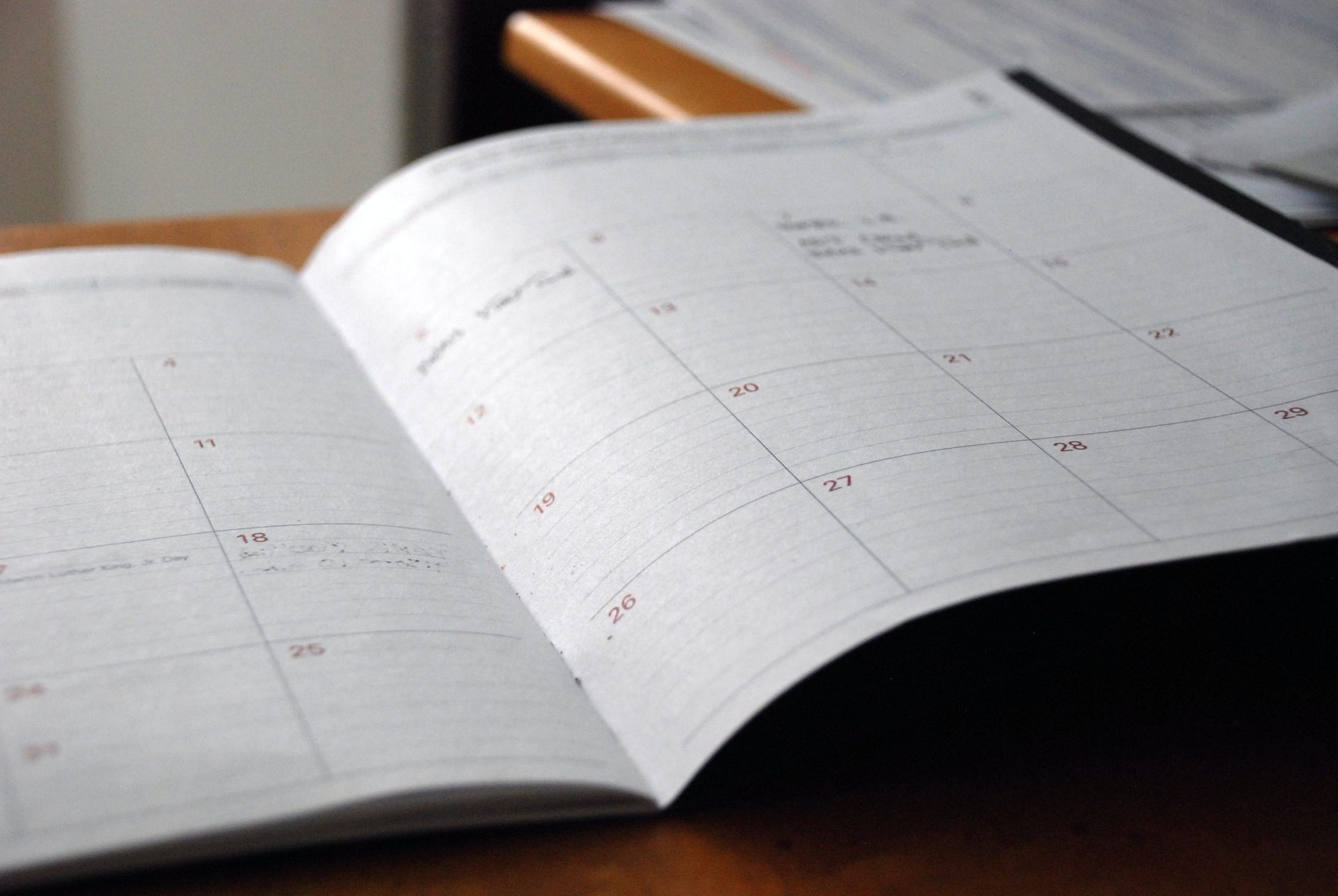
By Jordan Kelly
•
February 18, 2025
The best-quality submissions have one thing in common: research and other forms of preparation start early . . . long before the formal Expression of Interest or Request for Proposal is released into the marketplace. Conversely, inadequate pre-probity preparation sets the scene for a submission characterised by rushed background research (if any), as well as the disorganisation that results from waiting until the client’s always-too-short deadline is upon the bidder. The following is a set of recommendations for the research and preparation an intending bidder should conduct prior to the client’s release of the formal market call documentation. I have developed, tested and consistently employed this series of pre-probity bid management steps over the course of the past dozen years. It’s been refined now to the point where it represents a logical, comprehensive, streamlined framework – and ensures a strategy-based, high quality end-submission. Stage One : Collation and sharing of the existing information resulting from all previous prospect/client meetings and communications. Prior to the conduct of any bid strategy formulation sessions, all information gathered by business development personnel needs to be corralled, co-ordinated, verified and expanded upon. Stage Two : Initial overview strategy session with management personnel responsible for selecting external partners and bid team members. It’s critical to identify the most likely core elements of your intended approach (notwithstanding that this can, at this stage, be based only on pre-release research, communications and assumptions) before the selection of bid team participants and contributors, and before the selection of any joint venture partners, in order to ensure the assembled team is relevant to that strategy . Stage Three : Identify external partners and team management. Logical follow-on from Stage Three. Stage Four : Strategy session/s to map out an interim/likely strategy. The Pursuit Leader / Business Development operatives, Bid Strategist and Bid Manager should work closely together to identify the most strategic participants for this early and initial (pre-release) bid strategy development session (or series of sessions). The invitee list should focus tightly on those with direct client and project/contract experience , and relevant competitor knowledge , in order to ensure those participating have a valuable and specific contribution to make to the strategy development process. Stage Five : Production of a formal Interim Bid Strategy Document. This forms an early blueprint for the approach to the EOI/RFP response. It also documents a clear “to do list”, to ensure identified knowledge gaps are filled. (It needs to be recognised that although this will be based on the best information available at the time, it will be subject to any degree of change both before and after the client’s market call documentation is released.) Stage Six : Follow-through of Interim Strategy Document recommendations. The Pursuit Leader and his or her team, the Bid Strategist, and the Bid Manager must work closely together in the collection of additional information and actioning of items directed by the Interim Strategy document. This stage should include the identification of any Subject Matter Experts (SMEs) whose input may be required into any sub-strategies (flagged by the Interim Strategy document) for development. Stage Seven : Team education. The opportunity exists – while Stage Six is being conducted – to assess the broader team’s (a) project knowledge base, and (b) relevant writing competencies, and to address these issues prior to the bid production phase. Stage Eight : Second strategy session and production of "anticipated final" Strategy Document. The purpose of the second series of strategy sessions is to bring together the further information requested by the Interim Strategy document, firm up sub-strategies, and work with this new/refined input to develop the anticipated final strategy. (Clearly, if the directives of the Interim Strategy Document have not been actioned, the value of outputs from these second sessions will be negatively impacted.) This document will then form the final bid strategy blueprint, subject to its testing against the content and requirements of the actual RFP, upon release. Stage Nine : Customising of case studies and Curricula Vitae. The bid strategy blueprint in hand, an immediate start can now be made on the production of customised case studies / project data sheets, contract/project-specific CVs, along with any other supporting documentation likely to be required as part of the submission. Stage Ten : Testimonial-gathering, in accordance with Strategy Document intentions and directions. Similarly to Stage Nine, high-value testimonials should be sought from the most relevant of the bidder’s clients/customers. Stage 11 : Formulate brief for designers. As a “heads up”, if the submission will be heavy in volume, a specifically-formulated written design brief – the essence of which is distilled from the Strategy Document – should be produced for design / production personnel. This should be supplemented by an oral presentation of the essential elements of the bid strategy. Lengthy experience working directly with designers over many years has shown that the delivery of a clear, detailed and definitive design brief is essential to the design team’s development of a competent and strategic design concept proposal.

By Jordan Kelly
•
February 18, 2025
Some questions in a client organisation’s Request for Proposal (RFP) documentation appear to invite particularly standardised answers . . . and bidders usually give in to the temptation to cut and paste their responses from the last 17 submissions they produced. After all, how do you make the answers to such standard, black-and-white, non-subjective sections […]

By Jordan Kelly
•
February 17, 2025
Key to ensuring quality inputs to a bid strategy effort is, in turn, ensuring the relevance, sensibility and comprehensiveness of notes (and verbal accompaniments) provided by the bidder’s Business Development Managers and other front-line personnel. And the key to ensuring this relevance, sensibility and comprehensiveness is for these information-gathering parties to have first done the following: Planned their conversation outline and questions asked of the client, from the perspective of those bid team members who will ultimately shape (a) the bid strategy, (b) the proposed offering, and (c) the submission document. Reviewed their notations to ensure that any vagaries are corrected with the required clarity, that any information holes are filled adequately, and that any obvious questions have been anticipated (so that answers can be sought). Before, during and after all communication opportunities, those in these front-line, client-facing roles must be cognisant that they (and sometimes, they alone) are tasked with ferreting out critical bid-winning insights on behalf of all the various specialist roles in both the bid and delivery teams.

By Jordan Kelly
•
February 17, 2025
Unbeknownst to most of my clientele, I once completed (well, almost, just two weeks short of the finish line) an Officer Training Cadetship at Australia’s most prestigious military academy, the Royal Military College of Duntroon. One day my unit’s staff sergeant had us fall in and play “Chinese Whispers”. You know, the party game during which one person whispers a message to the person next to (or, in our case, behind) them, with that individual passing it on to the next, and so on. ( NB: In the United States, this game is apparently referred to more commonly as “Telephone” or “Gossip”.) The inaccuracies compound as the game progresses and the message is transmitted on down the line. In a party context, the purpose of the game is pure entertainment, with the final transmission rarely even remotely recognisable against the original message – and, invariably, nonsensical and hilarious. Don’t Over-Estimate Yourself However, you’d think that a unit of young, serious-minded, keen-eared officer cadets with a savage staff sergeant breathing down our necks, would do a better job of retaining the integrity of the message as he communicated it to the first cadet in the line. Not so. Years later, I recall neither the original message nor the hilarious result of its being passed down our six-man and one-woman line-up, but let’s just say it probably went something like the following. Original message: The enemy will be positioned behind the red brick building, on the right, two miles over the border line, with full combat weaponry and orders to eliminate anyone approaching from the northeast. Final version: The whales are going to die soon, so meet me behind the brick wall. Capture the Macro, the Micro, and the Minutiae What I’d like to achieve with this little story from my Army days is to have you, the all-important first point of prospective client/customer interface, understand how critical it is for you to document – clearly and in detail – the macro, the micro, and the minutiae of each meeting or other form of meaningful frontline interchange. The quality of the bid strategy (i.e. that which informs the end submission) is dependent, first and foremost, upon the accuracy and comprehensiveness of the information you derive from your communications with the client or customer. And, as you can see, the more concrete the condition in which you pass on these discoveries, observations and conclusions, the less chance they have of being diluted, misinterpreted or just plain lost in the communications chain within your organisation. Some companies have invested in software programs (often little more than basic online forms) for the capture of meeting proceedings and other customer/client dialogues. Generally, I’m not in favour of these. Certainly, the ones I’ve been exposed to, in effect, discourage any real depth or thought development by the business development (BD) operative, salesperson or other client-interfacing individual. However, they’re vastly more preferable than the common alternative: nothing. Urgency is Key to Comprehensiveness A key to producing the most valuable ( read: comprehensive, detailed and accurate ) notes following any meeting or communication is to do it as soon as you possibly can after that event. And I do mean ASAP. On one particularly business-critical (i.e. for my client) pursuit in which I took the role of bid strategist, I had the two-person tag team appointed to meet with the client, call me from their parked car immediately they left that meeting - dictating to me the content and conclusions of the interchange, while it was fresh in their minds. This was the difference between seven pages of invaluable client and competitor insights versus the likely alternative: half a page of sketchy bullet points produced later that week from a greatly diluted memory of the one-time-only hour-and-a-half meeting. Those seven pages of sharply focused, technicolour detail provided the foundation of the bid strategy, and the guideposts for considerable further research – research that led to unveiling nearly every other competitor’s likely strategy and related “USP” (Unique Selling Point). When added to the insights the client representatives gave us into their world, we were able to formulate an offering that overcame almost every major challenge (which were numerous) that the client organisation either had or perceived itself to be struggling with. What’s more we overcame these with elements that we were reasonably confident no competitor either could, or possessed sufficient insights to be able to, table. A Simple Pre-Planning Practice The point I’d like to return to here, is that producing such a high-quality bid strategy, and formulating such an on-the-money offering, was only possible due to the quality of the coalface, primary information captures. In addition to developing a strong sense of urgency for documenting the proceeds of a client meeting, I’ll make one further recommendation: For quality of insight and information capture, pre-format a simple notepad with a list of headings – each heading representing an area of questioning and “drill down” that you intend to pursue with the client. Ideally, the client won’t be phased by your request for permission to jot down basic notes during your discussion. The headings and subheadings in such a pre-formatted capture document will act as valuable prompts when you go to expand, after the meeting, on the detail of your in-situ jottings.

By Jordan Kelly
•
February 14, 2025
You’ll notice that – in all relevant Pursuits Academy content – I take the opportunity to remind business development operatives, bid strategists and bid managers of the absolute criticality, of producing a formal, detailed and comprehensive bid strategy document to inform the content of the submission and to guide the individual section authors. I’m often asked, “Should this be a ‘big picture’ thematic document, or a join-the-dots, able-to-be-cut-and-pasted-into-the-response type of resource?” My answer: Ideally, it will be both. Certainly, though, it will be the former. While it is acknowledged that some team members would like such a document to comprise fully self-contained, “cut and paste-able” components, it often serves a better purpose to simply lay out the document under headings likely to align with the client’s required response format. This allows each contributing author to pluck and paste in support of his or her own section/case-being-made. This way the author is not steamrolled into following what may be a too-narrow content outline. Additionally, a bid strategy must first be grasped holistically , so that its component parts can be communicated with full impact and relevance to the client’s all-important “big picture”.

By Jordan Kelly
•
February 12, 2025
I’ve written copiously about the advantage corporations create for small and medium-sized enterprises when these larger organisations exercise an arrogant attitude – as, unfortunately for them, they so often do. In this article, I’ll give you a window of insight into how arrogance shows up in bid documentation tabled by arrogant B2B enterprises. It comes down to this: If those frontline personnel responsible for a company’s sales think they already know it all then, in general, they’re unlikely to listen with the required intensity to pick up the vital clues that will help them differentiate their offering from those of their competitors. And they’re unlikely to have developed sufficient understanding of the client or customer organisation to feed back to their bid teams the quality of information and the depth of detail required to produce a genuinely client-centric Expression of Interest, Request for Tender, or other form of proposal. So let’s see what the end-product of a know-it-all approach looks like in practice. For the purpose, let’s discuss the most valuable piece of proposal real estate: the Executive Summary . There are three fundamental flaws that show up consistently in this all-important front piece. Each is the product of an insufficient appreciation of the client or customer organisation’s bigger picture, its priorities, its concerns – and all the other elements of understanding that would have resulted from competent information-gathering and a humble mindset. Fundamental Flaw No. 1: ‘We, Our, Us’ Most Executive Summaries I see are self-focused to some degree. Some to a very considerable degree. I once evaluated a bid, the Executive Summary of which featured the seller’s name no less than 17 times in a short series of introductory paragraphs. You might laugh at that, but a large percentage of Executive Summaries end up with the seller’s or service provider’s name (or “We”, “Our” and “Us”) at the beginning of most paragraphs. Other Executive Summaries start out talking about the client, but only as a prelude to a monologue about their own capabilities and credentials . . . often not taking the time to fully draw out the client-specific, contract-specific, or project-specific relevance of these. Fundamental Flaw No. 2: A No-WIIFM ‘Win Theme’ Many corporate bid teams wax on about “win themes”. Yet their “win themes” are usually all about themselves, their product or service, and what makes them so superior. And all in the most self-focused, self-congratulatory, unsubstantiated manner. What they fail to recognise is that the interest a prospective client or customer has in any service provider or product supplier, is directly proportionate to how relevant that provider or supplier has made itself to that client or customer – the “What’s In It For Me” factor. To draw that relevance requires listening skills. And to be a truly effective listener requires an open mind and an attitude of humility. And so results an Executive Summary – and often, in fact, a whole proposal – that is peppered with empty “brochureware” statements such as “best in class”, “world’s best practice”, or “cutting-edge technology” . . . and precious little clue as to what value this self-proclaimed grandeur brings to the client organisation in its specific set of circumstances. Fundamental Flaw No. 3: Fluffing Out with Filler Copy “We are excited by the opportunity to embark on this project with XYZ Corporation, and we look forward to bringing unparalleled skill and experience to drive your objectives forward.” Or, how to spin 29 words out of nothing to fill space at the beginning of an Executive Summary. Do executives and bid teams really write this sort of filler material in all-important pieces like the Executive Summary? Yes. And, yet again, they do it because they haven’t listened to the client, asked quality questions, and formulated a bid strategy from a position of true understanding of that customer’s world. If, in fact, they have formulated anything that represents a genuine bid strategy at all – since they may have considered such an activity expedient, given their self-perceived knowledge of the client or customer. Such are the very common weaknesses of large and supposedly highly skilled corporate bid teams. And such are the competitive advantages of the nimble and more attitudinally flexible SME that recognises the value of assuming nothing, taking the time to conduct quality research, crafting high-value questions, adopting an attitude of humility and employing strong listening skills, then taking detailed heed of the answers and using these as the foundation of a customer-centric bid strategy. Even if that SME’s offering were no better in any tangible regard than its larger competitors’, all else being equal, its proposal would stand an excellent chance of hitting enough hot buttons to pip the bigger guys at the post.

By Jordan Kelly
•
February 12, 2025
When you pepper your bids, proposals and other client communications with your own in-house jargon, you demonstrate your inward, internal, self-focused thinking. You give him or her the clear message that you are either unable or unwilling to think or communicate from any perspective other than your own / your company’s. And you indicate to them that they’ll have to constantly make the effort to interpret you and your position, rather than vice versa, as it should in fact be. To prevent this internal speak and in-house or industry jargon, pair up with someone who can competently and knowledgeably role-play a representative from the customer / client organisation (i.e. someone who KNOWS the customer organisation’s relevant personnel). Read the copy aloud to that person and have them stop you as soon as they hear a word, term or phrase with which they are unfamiliar, or that smacks of your company’s internal processes and philosophies. Better still, read the copy aloud to several people role-playing a variety of the client’s key personnel. That way, you’ll also pick up on language that may be too technical for some.

By Jordan Kelly
•
February 11, 2025
Many contributors to Expression of Interest (EOI) and Request for Proposal (RFP) responses are still writing in an overly-dry, benefit-burying "academic" style. Or, at the completely opposite end of the scale, doing an outstandingly amateur job of mimicking advertising copywriters. Or worse still, their writing style is a hybrid of the two. This is especially true of the civil engineering sector, where many of the contributors to a submission are engineers, or the like, by profession. They’ve been taught to write in an “academic” style and it’s all they know. So they either stay in that mold when authoring a bid section, or they think it necessary to slip into hard-core sales-speak. They don’t understand the vast space between the two extreme and undesirable ends of the spectrum. I’ve been pointing this out in my evaluations of client documentation for years, as a priority issue, but often, little changes. Why? Primarily because, as far as corporate bid teams go, as fast as that problem is solved in a team, new un-initiates are rolled into subsequent bids. It’s like sweeping back a mudslide with a hand broom. What are the keys to taking raw information and turning it into an authoritative, highly readable, conclusive and compelling section response? First, the basics. (Let’s concern ourselves with “style” after we’ve nailed these): 1. First and foremost – answer the question. If capitals in website copy didn’t come across as “shouting”, I’d constantly find myself writing “answer the question” in bold, capitals, underscored, with asterisks on either side, across the bid documentation I evaluate. Seriously. Getting carried away with a sales spiel or thinking a tender evaluator won’t notice that you’ve smoked over the inability to satisfy the intention of the specific question both lead to the same result: Minimised points for that section. And massive erosion of the overall credibility of the submission. 2. Have and USE A guiding bid strategy document. Most organisations are still doing it: Expecting their section authors or dedicated bid writers (whether in-house or external) to produce copy without sufficient guidance by way of an overall, underlying strategy. Many organisations are hiring in facilitators (who are rarely qualified to call themselves anything remotely resembling “strategists”) who produce a plethora of overly-basic, group-think-driven assumptions in key point form on butcher’s paper. The “war room” walls are then papered with these “outputs” and the entrapped-within writers are left to convert this, for themselves, into some form of guiding strategy. 3. Have section authors plan out their content, in order of intended fact roll-out, and submit this to the appropriate party before letting them commence writing. If you fail to implement this policy, then it’s almost guaranteed that those section authors who are not writers by profession, and/or have had no training in writing skills, will launch into a stream-of-consciousness outflow of directionless sentences and paragraphs. There will likely be a disconnectedness between paragraphs, and a lack of logical progression to the roll-out of facts. Think I’m being uncharitable? Produce as many evaluations as I have in the past 18 years and then challenge me on that. Now . . . having set the parameters and the process for a strategy-guided response, a logical flow, and a document that actually answers the client’s question/s, let’s look at what makes a piece of bid-writing compelling : 4. Go a quantum step further than simply applying the standard "Features vs Benefits" admonition. The “state the benefit not the feature” admonition has long since become commonplace. But there’s a special way to apply it in bids . . . because, in a bid, you know the specific reader of the document. It’s not a generic brochure with a multi-target audience. Two points to be made here, and they both circle right back to diligence and thoroughness in the strategy development phase: a) The deeper the understanding of the potential client and every facet of its contract/project and overall operating environment, the more immediately relevant these benefits can be made to the bid in question. b) It’s not the writer’s job to identify these alignments. It’s the strategist’s job. And it’s the strategist’s job to get them into the guiding strategy document . It’s only the writer’s job to articulate them, and to do so in a compelling manner. 5. Now, get clever with your copywriting skills. Here are some of the “principles of the pros”. First, understand the extent to which the nature of the piece you’re working on and the audience you’re writing to, allows you to write in a conversational tone. Second, grab the evaluator’s attention by leading with the most compelling component of your section response. The rest of your answer and your facts should hang off that, developing logically from that as your entry point. Keep your focus firmly on the reader (in this case, the potential client or customer) before turning to your own strengths and offering. In this way, you will have explained how everything you’re about to roll out about you , is relevant to them , their pain points, their sensitivities, their needs and their desires, and the specific boxes they have to tick with this particular procurement. Weave in the key factors that of differentiation from the competition and make these immediately relevant to the potential client or customer. Establish your credibility with relevant facts. Substantiate every claim you make, using quantified proof points wherever these are available. Don’t simply expect the evaluator to believe your claims. That’s an arrogant and presumptuous way to write. I call it “brochureware”. Find a way to quantify the value of your offering. The starting point for this is to identify (through research, not assumption) precisely what constitutes “value” in the eyes of the potential client.
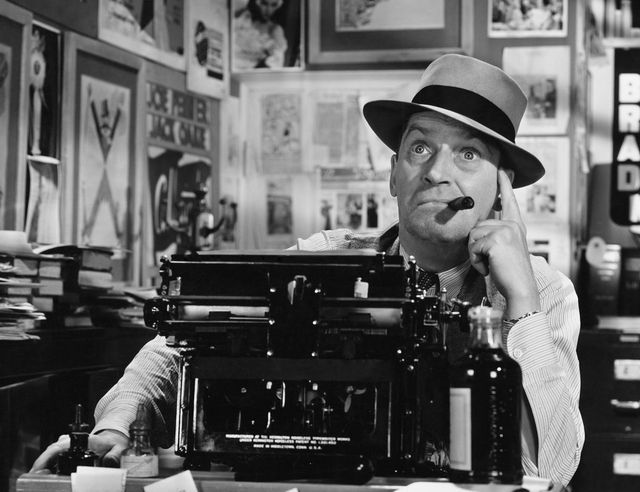
By Jordan Kelly
•
February 10, 2025
To a very large degree, the effectiveness of the bid writer’s output is only ever going to be as good as the quality of the strategist’s product. The writer’s ability to produce a truly client-focused and compelling final product is contingent upon your having first formulated a solid bid strategy . . . and having produced a comprehensive, solid, written guiding blueprint. Tip No. 1 – Clarity of Strategy A clear strategy paves the way for clear articulation. As in strategy, so in articulation. Never put pen to paper on an important, high-value submission without first producing a documented blueprint of your substance and intended content. Tip No. 2 – Benefits vs Features Think and write in terms of benefits, more so than features. Be cognisant, therefore, of the distinction between benefits and features i.e. the benefit results from the feature. Join the dots for the client organisation and its evaluation team members; don’t leave them to extrapolate the benefit from the feature for themselves. (A rider here: If you’re selling to engineers or other “technical” buyers, don’t omit features – but do make sure you explain their benefits in the context of the project or procurement in question.) Tip No. 3 – Straight Answers Answer the question. Don’t devolve into evasive writing because you don’t know how to answer a question, or because you have insufficient material to address it with substance. Have the integrity to correct the problem at its source, seeking out the information you need, or going back into the planning room if your content is lacking as a result of an incomplete or incoherent strategy. Tip No. 4 – Substantiate Your Claims Don’t let a lack of substantiation erode your credibility. One of the most common flaws in Expression of Interest (EOI) and Request for Proposal (RFP) responses is the proliferation of “empty” claims – claims made with no attempt to provide specific points of proof or any other form of substantiation. Being guided by a formal, written strategy is the first step in ensuring against an empty, substance-less submission. Tip No. 5 – Process, Don’t Parrot Think for yourself. You’ve heard the adage, “A consultant is someone who asks for your watch, tells you the time and charges you for it.” A similar concept underlies the common tendency to either repeat verbatim, or to minimally re-phrase, large tracts of the client’s own EOI or RFP documentation. That demonstrates neither any conduct of your own research, nor employment of your own thought processes.
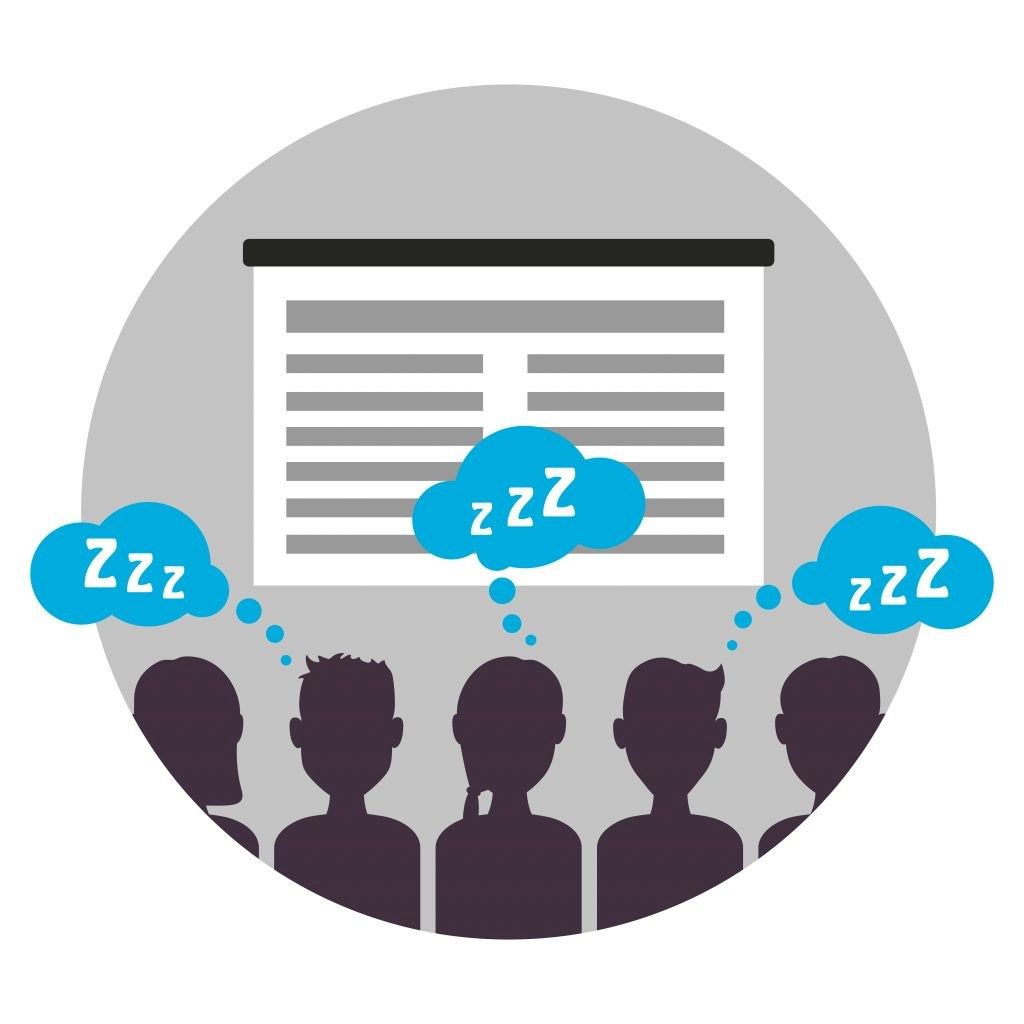
By Jordan Kelly
•
February 10, 2025
It is, has always been, and always will be, my firm belief (and my consistently demonstrated experience) that the concept of “strategy” and the concept of a “template” are, at root, in direct conflict with each other. Strategy is the output of deep, analytical and lateral thinking. By contrast, by their very nature, templates produce shallow (what I call “inch deep”) thinking. It is not possible for it to be otherwise – regardless of the detail and complexity that may be built into any given template – because strategic thinking is not , by its very nature , linear. Past a very shallow level, templates cannot effectively or efficiently direct the non-linear, nimble and fluid thinking required to produce an optimal, competitively superior strategy. There Is An Exception Templates, however, do have a role to play when a bid team doesn’t have a genuine strategist to lead it in its formulation of strategy. BUT (critical qualifier follows) . . . the value of templates, even in that scenario, is only as “set sail” guideposts and final check points. Templates have no value as a singular and definitive tool for strategy formulation; they certainly do not represent a replacement for the deeply neural-driven, multi-layered thinking that produces a well-thought-out, detailed, well-knitted-together, comprehensive strategy. The current trend towards making templates more prescriptive in an attempt to raise the quality of bid strategy outputs is, in fact, counterproductive. It exacerbates a core problem: That current bid strategy sessions don’t take the investigation and think tank process either sufficiently wide or sufficiently deep ( width often being dictated by the findings of the depth of analysis, and thus not able to be predicted in a template). At best , injecting further detail requirements into templates risks directing discussions and inputs down an artificial path i.e. a path that may not lead to the optimal end result in terms of strategy. In my opinion, this is one of the primary factors contributing to the production of supplier-centric (versus genuinely client-focused) submissions and their largely “brochureware” content. In the absence of the optimum strategy, or at the very least simply a quality strategy, the content of the ultimate submission is left, in large part, to the auspices of the individual section authors. And the result of that can - logically - be nothing more than a patchwork quilt of opinions and assumptions.

By Jordan Kelly
•
February 9, 2025
Whenever I start working with a company, the first thing its client-facing executives invariably tell me is how well they know the organisation they have submitted – or are about to submit – their latest bid to. But here’s the interesting thing: When I look at their bid documentation, very little of this supposed knowledge comes through . . . even in key, “qualitative” pieces like the Executive Summary. Here’s the reality for most bidders: For all their “confidence” over the quality of research supposedly conducted into, along with their confidence over the quality of the organisation’s relationship with, the prospective client – it doesn’t show up in what they present to those clients. Why not? There are three critical steps to making sure what you know about a client and its procurement not only informs your Expression of Interest (EOI) and Request for Proposal (RFP) responses, but that it wins them for you. Note: Each of these three steps requires your Business Development (BD) and other client-facing executives to work closely with your bid production team and writers to ensure you’re getting key intermediary processes right. The Concept Is Simple but Executing It Isn’t These three steps are simple in principle – but executing and bringing them all together is often less than easy. In summary, the three processes are: 1. Doing the right research and asking the right questions. There are, in turn, three critical keys to asking the right questions. They are: Thorough and intelligent prior research (to enable strategic question planning); Quick-mindedness (to know where to take the line of questioning from there) and tenacity (to follow that line all the way through), and Listening skills par excellence (to hear both the content of the client’s answers and the underlying concerns and motivators). 2. Capturing the resultant information effectively and bringing it ‘home’ to the bid team to inform the bid strategy. Let me say here that I have never yet seen the use of templates and software result in deep and meaningful (or any other definition of effective) information capture. These generally produce surface-level, “one-sentence per field” or sketchy bullet-pointed information at best. They’re also considered an embuggerance by the BDs and salespeople . . . a post-event ruination of an otherwise enjoyable client interface. To whatever extent it is possible to take at least keyword written notes during a client interface, this is greatly preferable. These should then be fleshed out at the earliest possible opportunity (in the client’s car park, even), to minimise the erosion of remembered points and detail. 3. Converting that raw information into intelligence. There is a common misnomer in use in this field: it’s the use of “information” as synonymous with “intelligence”. Information and intelligence are not the same thing. Information becomes intelligence only when it is taken apart, considered and processed in such a way that it becomes meaningful in the specific context of the pursuit or bid in question. Unprocessed “information” is nothing more than raw data. One of the classic approaches to converting “information” into “intelligence” is to take a piece of data and ask, “So What?” i.e. in terms of the pursuit in question. The problem is, most strategists and their workshop participants don’t dig down deep enough: The answer to a well-asked “So What?” will, more often than not, lead to another question . . . and that question will most likely be a quality question . In turn, the answer to that question must be found – or at least the best possible assumption made. Thus, the process of converting information into intelligence has a number of layers, the number of which is not determinable from the outset. And the process of drilling down through those layers is most certainly not usefully guided by any form of “template” (although that’s the standard approach). While the above is little more than a basic outline of the overall process, conduct these steps thoroughly and competently, and you’re light years ahead of most of the big-ticket bidders out there today.

By Jordan Kelly
•
February 7, 2025
In the case of large and complex bids with numerous contributing subject matter experts, produce writing guides for the major sections of your Expression of Interest (EOI) or Request for Proposal (RFP) response. Here are the basic steps: Start each writing guide with an overview of your overarching bid strategy. Then lift out all the elements of your bid strategy that relate to the section for which you’re producing the writing guide. Arrange this information in an order that reflects the client’s EOI or RFP structure and questions. Then provide any elaboration or further logic/tips for the writer/s of that section. Your aim is to make the task of authoring their sections a paint-by-numbers exercise for your contributing authors. If you yourself are a competent writer, you may go as far as producing tracts that the writer’s guide user/s can cut and paste into their own section response/s.

By Jordan Kelly
•
February 6, 2025
Often under-estimated, is the importance of capturing – in detail – both the content and conclusion of conversations with the prospective client organisation’s representatives. The more socially-minded, talkative business development and sales operatives often feel it unnecessary to capture all the components and intricacies of discussions. Yet, if it was a well-planned and quality conversation, the majority of its content – if documented – stands to be of considerable value to the bid team subsequently tasked with formulating a bid strategy. At the least , it will provide the bid team with an insight into the client’s thought processes as these crystalised themselves during the course of the conversation. And at best , it will reveal the client organisation’s concerns and desires in detail, along with the reasons that organisation’s representatives hold these desires and have these concerns. These insights offer valuable signposts for a bid team, in that they (a) potentially point to the offerings that will satisfy these desires, and (b) help identify the strengths and strategies that the bidder can table to mitigate any risks the client perceives.

By Jordan Kelly
•
February 5, 2025
When preparing to send your section authors and subject matter experts off to begin their respective writing tasks, check and ensure the following: Whether a seasoned bid writer or a newbie, check that each has planned out his or her sections out before embarking on each section. That each has adhered to the plan you overviewed with him or her for the content of his or her section. That each has checked his or her “facts”. That each has substantiated any claim he or she has made. That each has made his or her first paragraph – as the “introduction” to their piece – strong and punchy, and that this “intro” paragraph provides a compelling entry point to the rest of his or her section. That each has drawn out the project-specific or contract-specific relevance and meaning of anything they have written. They should be aiming to do as much of the evaluators’ thinking for them, as possible. That each has communicated the benefits associated with the features of the technology or service ( not just the features). As you conduct these initial and progressive checks, assemble for yourself a helicopter view as to how consistently and seamlessly the various sections fit together (or not), and whether they are all in the same degree of alignment with the overarching bid strategy guidance document.

By Jordan Kelly
•
February 4, 2025
Apparently, before important business meetings, Aristotle Onassis used to stand alone – in the wee small hours of the morning – on the deck of his yacht, going over and over anything that could go wrong during the proceedings. To take a critical pursuit or bidding perspective on this obviously productive habit, we might think of this as a debrief-in-reverse. Here’s a checklist to prompt you as you mind-map these out ahead of time. Get together with any colleagues you’ll be attending the meeting in question with, and ask yourselves: What if, despite our best efforts, we find we’re not meeting with the optimum representatives of the client or customer organisation? What if there’s been some recent development that the client assumes we know about, and we don’t? What if there’s something the client-side considers fundamental that we haven’t picked up on? What if the client-side representatives have a negative impression of our company, product or service? Worse still, what if they come in from left field with something that’s happened that we don’t know about? What if they’ve had an experience with us or our product of which we haven’t become aware? What if the client asks something about our product we can’t answer? What if the procurement timeframe is significantly different than we have been given to believe? IMPORTANT: Anticipating what could go wrong ahead of time is key to preparing more strategically for the meeting, to greatly reduce the chances of such outcomes. However, it’s always best to expect the unexpected, in addition to thorough preparation.

By Jordan Kelly
•
February 4, 2025
If you’re looking for "high-viz" points of difference when competing with larger competitors, look no further than the avoidance of convoluted bombast and meaningless "mumph" as your first. Most corporate submissions are full of it. The use of plain, unadulterated English will be a refreshing change for your prospect organisation’s evaluators. Bid teams cause themselves a huge problem when they insist on using trendy fashion-speak and other frivolous fuzz in their written responses. Knowing the frustration this causes clients, and the frequency with which it happens, I can only sincerely urge you to take full advantage of the likelihood of any tendency by your competitors towards what is “high-falutin'” verbiage. There are two key reasons your competitors engage in this rubbishy writing. More often than not, its usage is an attempt to sound sophisticated and “switched on” or “up to the minute”. Other times it’s to smoke over a lack of substance in answers to the bid documentation’s questions. Often, it’s both. Bid teams and their writers can also get tangled up in this type of non-English even when there actually is knowledge and potential substance to be conveyed in the content of a proposal or bid. This is particularly unfortunate for their employers (but equally to your advantage), because those documents come across pretty much the same as the substance-less version that uses the same type of guff to disguise a lack of core message. Here are some examples of this sort of “empty’” writing. These examples are fabricated because quite clearly I can’t refer to confidential bid documents. Nonetheless, they’re typical of some of the writing I see produced by corporate sales and bid teams . . . and many senior executives, too, even more alarmingly. Example 1: We employ best-of-breed technology options to implement cutting-edge, proven solutions, ensuring you of a constantly innovative approach and continuous improvement in your IT environment. Example 2: Our track record demonstrates our commitment to world best practice and, accordingly, we will engage our focus on innovation throughout the contract. Example 3: As your business partner, we will work closely with you to leverage our experience across the project, producing an optimal solution that is robust, scalable and that can be seamlessly integrated with your existing systems. Do experienced operatives really write this kind of largely meaningless nonsense ? Yes, they do. And much worse. The entire content of some of the bids I’m given to provide commentary on is as convoluted and meaningless as the above examples. Tens (sometimes hundreds) of pages of, largely, non-information. This commonly happens when little or no prior planning takes place and where, as a result, there is no central bid strategy. Worse still, this strategy-less starting point guarantees a very supplier-centric bid or proposal. And usually one that is not even particularly readable or sensible, let alone compelling. My recommendations are two-fold: • Use plain English. Resist the temptation to dazzle the prospective customer or client organisation and its evaluators with an extensive array of jargon. I’m always particularly saddened when I see a submission produced by a smaller enterprise, the management of which obviously thinks it’s a demonstration of their ability to foot it against their larger competitors by using the same crazy corporate-speak. • Place priority emphasis (as early as possible) on conducting intensive, thorough bid strategy planning sessions (preceded by comprehensive client, contract/project and competitor research). This will help ensure a distinctive win theme and, in turn, solid content - and applies to any size business. Tell it like it is. Drop the dandy words. You don’t need them, the client/prospect and its evaluators are neither fooled nor impressed by them – and (pending the quality of your offer and the substance of your content) the absence of them will render your documentation a pure and softly-landing snowflake amidst the garbage that is the hard-going reading contained in your corporate competitors’ productions.

By Jordan Kelly
•
February 4, 2025
In ‘5 Tips to Sharpen Your Bid-Writing’ , I wrote about the importance of a having clear and documented bid strategy, focusing on benefits, answering the client’s questions , substantiating your claims , and avoiding consultant-style parroting . These considerations all, in one way or another, relate back to effectiveness in the strategy planning stage. That is, you can’t expect to execute these tips successfully unless comprehensive research and thinking has taken place beforehand. My next lot of tips relate to the writing function per se . Tip No. 6 – Client Focus vs Supplier-centrism Be client-focused not only in your content (i.e. as above, this relies on a solid bid strategy), but also in your writing . If and whenever possible, your choice of opening words should let the evaluators know that your answer and information is going to be framed in the context of the client organisation’s interest, its needs, its project / account /contract, its priorities, and its concerns. Then keep the focus squarely on the client. Don’t revert to an organisationally self-centric tone. Tip No. 7 – Steer Clear of Hot Air & Hype Avoid the temptation to slip into sales-speak. Don’t be tempted to go into marketing copywriter mode. It’s not required. Worse, you’ll come across as an amateur, if copywriting isn’t your day job. For the most part, write as you would speak. It’s the most readable way to write. If your writing is natural, informal and unstilted, that is in fact what you are doing: You’re speaking to the client. You’re just doing it through the written word. So don’t out-clever yourself by falling into the mistaken mindset that you need to be a creative writer to write bids. In fact, trying to be creative or “salesy” is what brings a submission down. It’s about getting the basic content correct and complete, then simply making sure it progresses logically and reads sensibly. Tip No. 8 – Avoid the ‘Cut & Paste’ Trap Do NOT “cut-and-paste” from your company’s policies and procedures manual or corporate / product marketing materials. Give the evaluators more credit than to fall for thinking this is original content. Tip No. 9 – Be Wary of the Template Trap Similarly to the above, don’t rely on templates and text from previous submissions. Apart from the obvious scope for mistakes, when you cut-and-paste you’re not exactly working with a genuine client-centric focus. That is, the focus of the copy in question is not this particular client . . . at best, it’s any client. Tip No. 10 – External Impressions Read your finished piece out loud . . . to someone else. Read your material aloud to a disinterested party. You’ll avail yourself of the invaluable phenomenon of hearing your writing through that person’s ears. So much the better that they have no knowledge of the topic; you’ll quickly ascertain whether or not your piece makes sense to the common reader or other non-technical audience.

By Jordan Kelly
•
February 3, 2025
Bidders’ proficiency in strategy formulation is being materially hampered by the ever-expanding plethora of consultants encouraging their clients’ reliance on (often so-called “proprietary”) tools and templates. It’s an enduring problem that’s getting worse, as more and more consultants pop up in the marketplace, spruiking their latest and greatest “methodologies”. Here are three core reasons why “tools” and “templates” simply do not produce quality outputs, and absolutely cannot be relied upon as the basis for formulating bid strategy: These grids, tables and charts, and little generic flip sheet exercises generally encourage you to populate them with what you already know. Or (and here’s the core problem) what you think you know. With the pressure to populate the fields with as many bullet points as possible in a tightly-timed little group-think exercise, there’s a lot of assumption going on. And assumption is not a good basis for the formulation of a successful bid strategy. This problem is exacerbated by the fact that, once it’s in the tool, template, or up on the flipsheet, it’s generally then taken as gospel, with no verification or cross-referencing considered necessary. (Heaven forbid, someone’s feelings should be hurt by the suggestion that this be essential to the production of a rock-solid, authoritative strategy document). To whatever degree these raw inputs are converted to some form of “strategy”, that “strategy” is frequently based, therefore, on assumption and arrogance. And that’s not a great place from which to produce a compelling offer, solution or submission. As can readily be seen in the vast majority of submission documents. ( NB: To a seasoned and savvy client or bid evaluator, weak content cannot be smoked over by throwing enormous slabs of budget at designers to produce all-singing, all-dancing, multi-media, coffee-table productions). Such methodologies spawn tactics , not actual strategy. The next exercise in one of these inch-deep-thinking “workshops” is generally either to: Have a note-taker write up the contents of the populated charts and flipsheets (usually in a fairly useless “bullet point” form), supposedly constituting some form of “strategy” that will go on to be used as the document that guides the bid’s section authors. At best, this results in jumping right over the “strategy” stage and into “tactics”, in turn, demonstrating complete ignorance of the fact that tactics are informed by strategy, and are meaningless, or even dangerous, without it. Worse still, it results in a variety of tactics infiltrating the end submission document, in direct proportion to the variety of section writers contributing to it. OR (worse still): To paper the walls of the “war room” (the war room being another bad idea) with these excessively raw inputs and leave section authors to work out how to use them. A submission’s designated section authors are usually either subject matter experts or writers. They are not (generally speaking) strategists. Being left to their own devices to turn someone else’s / a group’s raw thoughts into strategy as they put fingers to keyboard is not their strength. At best, as above, as each section author attempts to do this, a multitude of different themes and tactics start showing up in the resulting submission draft. These methodologies encourage workshop participants to document (and rely only upon) their existing knowledge (or, as above, their assumptions ). Key to formulating a well-informed, authoritative strategy, is focusing on what is not known . . . and the development of plans to acquire that knowledge. Too often, “strategy” is developed either in a vacuum, based on the existing or assumed knowledge of the participants that a bid manager has been able to muster into (and keep in) a meeting room for a few hours. (One can only wonder what history’s grand master of strategy, Sun Tzu, would have thought of that.) In a truly savvy strategy, the emphasis is on new discoveries about the client, project and history, stakeholder mix and history, field of competition and each individual competitor, along with numerous other aspects of the overall environment (and the testing of assumptions) . . . knocking out the competition by way of knowing more – much more – than each competitor knows. When it comes to strategy inputs, it’s a case of “ more is more ”, “ test, test, test ”, and “what’s the absolute latest and freshest ?”
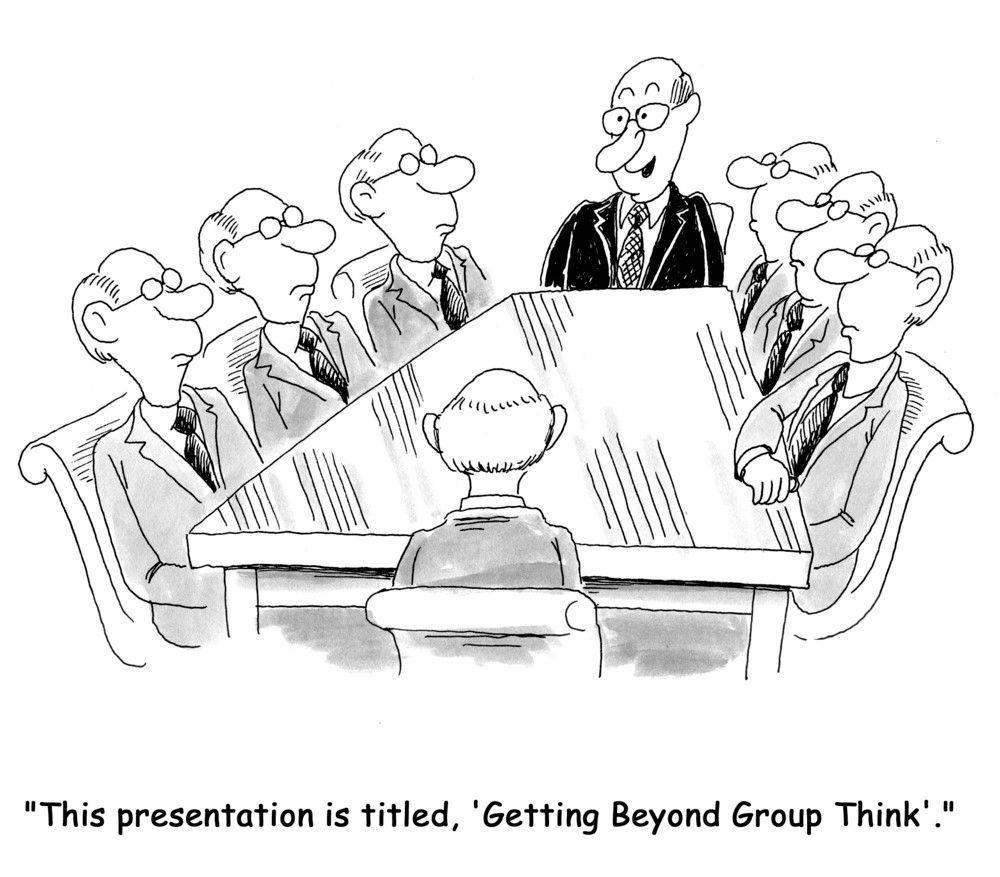
By Jordan Kelly
•
January 31, 2025
Adopting an "anti-template" policy is just as important in the development of bid strategy, as it is in the production of the end submission. Here are three primary reasons to avoid what I call “templated thinking” when formulating strategy: 1) Genericism vs Uniqueness: A Process that Doesn’t Match the Required Mindset Once the nature of a procurement or project is understood, a bid team should endeavour to identify and place focus on the characteristics of that procurement or project that are unique to that specific project. The use of pre-formulated, generic outlines is potentially counterproductive. 2) Strategy Development Should be Led By A Strategic Thinker Running a group through a pre-determined list of questions does not allow conversations to evolve naturally. Instead, thinking and discussion should be channelled along in a lateral – albeit controlled – fashion, developing all threads of input. This is something a template can’t achieve. 3) A Template-Directed Discussion Will Hit An Early Wall A template stops the discussion at a generically pre-determined point – possibly (well) short of the best possible strategic decision.

By Jordan Kelly
•
January 30, 2025
It’s commonly assumed by bid teams that emotion has no place in formal Expressions of Interest (EOIs) or Requests for Proposal (RFPs) . . . and that these should be strictly hard core, fact-and-logic based documents. But this is an assumption – and a debate that needs to be had within the context of the overall pursuit process. My own observations – over a decade and a half of formulating bid strategy – are that, in the early stages of a procurement process (i.e. years or months before a major capital investment) client-side thinking is predominantly qualitative (versus quantitative), subjective (versus objective), and even emotions-based. This is the phase during which marketplace and opinion leader influences, along with personal preferences, are shaping the views of those leading a major procurement investment. This is the "emotions" phase. This is also the phase during which client-facing business development (BD) operatives / pursuit leaders should be employing their best listening skills: listening for biases towards you or a particular competitor (at either the reputational/organisational or the product/service level), listening for objections, and listening for variance in the ranks of the procurement influencers. Fast forward to the production of the formal submission: Assuming your BDs and pursuit leader – as well as any supporting departments within your organisation – have done their level best to steer the prospective client in your direction, there will be a certain mix of emotions with which the client team has arrived at the point of sitting down to formulate its market call documentation. You need to know precisely what that emotional mix is – or at least the predominant emotion within that mix . For example, is it your BDs’ best estimation, from their meetings as well as their secondary research, that this prospective client wants as close to total risk-mitigation as it can get? You’ll have heard the old maxim, “No-one ever got fired for buying IBM.” (If you haven’t, this basically meant that no IT manager ever lost his or her job for making a poor purchase decision, as long as it was an IBM product. This maxim has since been applied to other industries i.e. as long as you choose the biggest, most-established brand name, you’ll have less explaining to do for any risky supplier or service provider selections, or if things go totally pear-shaped.) What’s the Underlying Fear or Desired Reward? If this is the case in any procurement process in which you’re a bidder, the underlying emotion is clearly risk-aversion. Thus, the emotional need is for security – for bullet-proof certainty that the wheels won’t come off during delivery of your project, or that your product won’t fail or be unsuitable for its intended purpose. This, then, is the emotion that you must address in your bid strategy, and in your written submission. And, to the bid writers: There will be words that scratch that emotion, and that are perfectly appropriate to use in a formal EOI / RFP response. (An aside, you need to fire bullets from both guns in your copy i.e. emotion and logic . To whatever degree you’re unclear about which gun’s trigger gets pulled first and which second, in any given section of the submission err on the side of eliciting a visceral reaction in the evaluators, and then following through with logic to consolidate their conviction.) That said, with regard to any emotion-inducing terminology, this should still, of course, be within the realms of acceptable business writing. It also shouldn’t be peppered through your copy erratically and outside of genuine strategy/question-response contextual usage. And Now, To Logic So we acknowledge that emotion will have played a role in the decision as to which service providers or product suppliers were invited to tender for a large procurement; that the initial stages of a major purchasing decision are, at the least, influenced (if not driven) by emotion and subjective influences. Now let’s move to the role of logic – and precisely when to push that button. And that is (outside of the emotion/logic balance demonstrated in the written submission) the shortlistee selection, due diligence, and post-purchase justification phases. These are primarily driven by logic. (Your prospective client would, of course, claim that these phases – if not the entire procurement cycle – are driven 100 percent by logic. But you know better.) To recap then, your strategy and your submission needs to press both buttons. And, within the context of any given question/section of the client’s documentation, you will likely want to do it in the order of emotion backed up by logic . Again, emotion, to stir things up – and logic to reassure the evaluators they’re leaning in the correct direction and to thus move things over the finish line. But, if there’s any doubt in your mind re the nature of the emotion, or striking the appropriate emotion/logic balance, err on the side of rolling out the logic and hitting that hard. Because, at the most decisive moment in the whole process – the moment when the evaluator’s hand moves towards the boxes where he or she enters your section/criteria scores – he or she knows it’s rational, logic-based facts, figures and other hard data that he or she will be required to put forward to justify to any other parties, the scores you’re about to be awarded. In short: Identify the driving emotions behind the procurement and use this insight, both in your bid strategy and in your end-submission, to hook the evaluation team at a “gut” level. Then provide all the logic, rationale, facts and stats to demonstrate how that emotion will be satisfied or put to rest through selection of your proposition over and above any competitor’s.

By Jordan Kelly
•
January 29, 2025
Every meeting opportunity you get in the lead-up to the release of the client’s formal Expression of Interest or Request for Proposal, is gold . Ensure you drill out the most valuable insights possible from each such opportunity, with some critical self-analysis of your preparatory thinking, including: To start with, are we meeting with the right people? Are these the real decision-makers, or as close as we can get to them? What will the customer / client organisation’s representatives expect that we know about their business and this project or procurement? In answering the above question as comprehensively as possible, have we broken down the project or the need into a strategically granular number of parts? Are we gathering as many insights into each of those parts as we possibly can? (Think both primary and secondary research.) In reviewing the above, is there any critical piece of information we’ve missed – either about our own product, service or company, or about theirs? What degree of competitive intelligence should we have done? What would a switched-on competitor have done? What might they know about us? Is this a procurement involving an incumbent? What do we know about the incumbent, the history of the account, and customer satisfaction levels with the status quo?

By Jordan Kelly
•
January 28, 2025
When it comes to business development conversations, as counterintuitive as it is, "humble" is a winning strategy. The importance of being humble in winning high-value bids – and in any aspect of new-business pursuits – has been my hobby horse for the more than two decades I’ve been specialising in this field. Why is being humble so hard to do, and why is it such a winning philosophy in discussions with prospective customers and clients? Let me count the ways . . . (I’ve only got room for two, but I could write a whole book on it – and I have . Firstly, while you’re busy trying to convince the client or customer of the “smarts” of your service or your product, your customer is doing one of two things: He’s either trying to determine the relevance of those smarts to achieving his goals or the likelihood of them providing the solution he needs / might need . . . or he’s not. You don’t know which he’s doing unless you’re really listening . Ideally, in fact, you should be helping him make the connection . . . but that takes an even deeper level of listening. And that’s where humility comes into its own as a pre-bid engagement strategy. To exercise humility is to listen. The old “two ears, one mouth” equation. If you make it your Golden Rule to listen first, speak second, you’ll be on the path to uncovering critical information / underlying intelligence that will help you deepen the alignment between the customer’s / client’s needs, desires, concerns and priorities, and your product or service. Cut the listening process short and, in direct proportion, you are cutting short your supply of “inside” information on how your offering is, or can be tailored to be, the best possible solution for your customer or client . . . which is the most direct and cost-effective way to solve his or her organisation’s problem or to realise that organisation’s goals. Sales 101? Think Again. This sounds incredibly basic, yes? Sales 101, right? Then why is it that, when I speak with Business Development operatives to gather information to assist the development of bid strategy, nine times out of ten I come up empty-handed in terms of anything really deep and meaningful . . . any news I can use? Why do I end up conducting impromptu, delicate, coaching moments with BDs to demonstrate how to get this information? To alert them to the sort of information they should have listened for in the first place, let alone what they should have proactively dug out? Secondly, there is an enduring belief that “sales” and “business development” are all about “getting our message across”. Consequently, most business development operatives spend more of their pre-meeting preparation time planning what they are going to say , rather than formulating a strategic questioning outline to obtain the answers they need. And of the too-small proportion of BDs who do have the foresight to invest (what I would consider) a decent amount of time and forethought into the pre-engagement planning of questions, most stop after obtaining what are often only superficial answers to those questions . . . before succumbing to the temptation to pick up on an element of those answers and dive in with a sales pitch. What’s the Hurry? Are they concerned this might be their one and only – or their last – meeting with the client organisation’s representatives before probity kicks in? Then they should start their market-scanning, prospect research, and pre-bid engagement processes earlier! Here’s the bottom line: If you’re providing genuine value in those conversations, you’ll be invited back. And the best way to provide value is to ask well-researched, quality questions , listen carefully to the answers, and then ask further quality questions. Do that – and do it well – and the client will know they’re in the presence of someone who’s more likely to provide value, than someone who came in and banged on about the brilliance of their company and its product or service. Asking quality questions, listening carefully to the answers, and knowing what to do next with the resultant information is the No. 1 skill that wins bids.

By Jordan Kelly
•
January 23, 2025
This point is so important, it’s going to be a checklist all on its own: Have I framed ALL key points and other content from the prospect organisation’s acute point of self -interest? Go hunting for any place in your proposal, response or submission where you might have slipped into vendor self-centricity. While it may sound like a simplistic admonition, it’s only a minority of bidders that actually pass this essential litmus test. For many organisations, there’s a quantum leap to be made to translate principle into practice: that is, when it comes to fully understanding the client’s world and associated challenges, and to then formulating a solution specifically to address those issues and articulating that proposition from the client’s perspective. A particularly good idea is to read your proposed documentation from the perspective of the client evaluation panel that cares nothing about the bidder . . . other than what that supplier or service provider can do – very specifically – to solve the client organisation’s challenges and help turn to reality any goals and visions it has pertaining to the procurement in question.
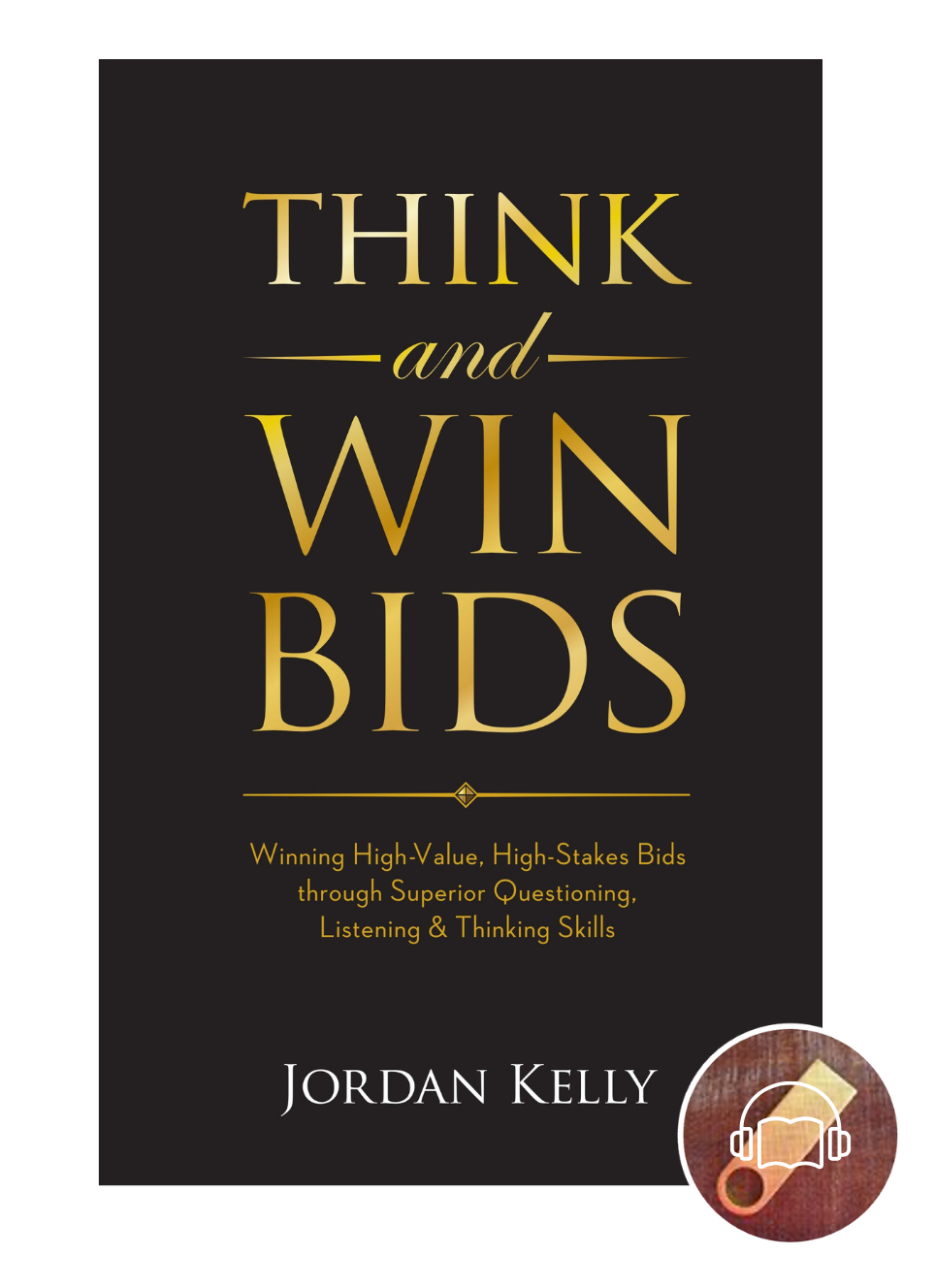
By Jordan Kelly
•
January 23, 2025
THINK AND WIN BIDS Winning High-Value, High-Stakes Bids through Superior Questioning, Listening & Thinking Skills The three fundamental skills of a successful bid strategist and bid leader are the ability to think , to listen and to ask quality questions . ' Think and Win Bids ' is more than a catchy title. This is a book with a strong message and a wealth of commanding insights into the fundamentals of winning bids . . . including the need to deeply understand a potential customer or client organisation, the world in which it operates, its intended procurement, and the all-important backdrop against which that procurement is being made. The capacity and willingness for a bid leader or business development professional to think deeply, logically, strategically and client-centrically is a key differentiator between those who can sustain a high win rate and provide much-needed leadership in new-business pursuits, and those who flounder in such a role. It’s a skill set that can be taught – so long as the necessary degree of humility and “coachability” exists. And that’s the reason this book was written. Its title is an unashamed play on that of the all-time business classic, Think & Grow Rich , penned in 1937 by leading business thinker of his time, Napoleon Hill. This highly readable, compact book will teach you: The importance of understanding your customer or client organisation and its procurement from a holistic (versus a narrow, service- or product-focused) perspective. How to gain a detailed and bid-winning appreciation of the procurement psyche of your prospective customer or client organisation. How to determine the most valuable information to acquire about a customer or client organisation’s intended procurement and the bigger picture directing or impacting it. How to plan for the acquisition of the above points of critical knowledge. The difference between high-value and low-value conversations and how to plan for the former. The specific differences between great listeners and average listeners. What highly effective business development operatives and bid professionals do that average ones don’t. The many types of information available to help inform your bid strategy, and how to source them. Little-known sources of competitor information. The criticality of channelling information back, in a valuable format, from the client or customer coalface to the bid team. What you need to know when your client organisation has its own (up-the-line) client. How to take advantage of arrogance on the part of the competition. The importance of avoiding arrogance in your own organisation. The value of “sleuthing” the customer’s documentation versus simply “reading” it. The critical distinction between “features” and “benefits” and how to capitalise on your ability to translate one into the other. What constitutes bid strategy . . . and what doesn’t. How to turn raw information into bid-winning intelligence. Working wide while drilling deep in the strategy formulation phase. How to develop a winning bid strategy. Why “thorough” is the best default position when it comes to strategy. Why talk of “silver bullets” is naive. How to avoid confusing tactics with strategy. Why templating is the opposite of thinking. The importance of documenting your bid blueprint in detail. How to position your organisation as a trusted advisor. How to get the most out of a de-brief. How to hire the most effective professional support.

By Jordan Kelly
•
January 22, 2025
Skimp on the detail in the first three stages of the bidding process and your chances of winning a mission-critical bid are severely compromised from the outset. On the flip side, do an outstanding job of laying these foundations, and you’ve given yourself a giant head start on any competitors that haven’t (and most don’t). 1. Conduct the most comprehensive, self-critical "bid or no bid" analysis possible. A competent and comprehensive “bid vs no bid analysis” gets you clear on every component of your motivation for bidding the project or contract in question. But that’s not all it achieves. It also lays the groundwork for the later formulation of your bid strategy, by identifying each individual point of alignment between the client’s objectives, challenges and concerns, and your enterprise’s capabilities. This gives you a head start on solidifying these and making them even more relevant to the client and its likely selection criteria. Equally, it helps you identify the points of misalignment; the areas in which a better-positioned competitor can undermine you . . . and gives you the earliest possible chance to address these. 2. Select your bid team members strategically. It’s a sad fact that, often – especially when a bidder has multiple Expression of Interest (EOI) and Request for Proposal (RFP) responses on the go – the bulk of the bid team is simply an assembly of the available, with a couple of relevant subject matter experts thrown in. There’s also scant attention paid to the probable dynamics within the team – and whether these are likely to result in a streamlined, highly productive process, or a frustrating, unhappy experience and a likely compromised output. The inputs and outputs of a bid team can only ever be as good as the research, care and strategy that went into the selection of the individuals it comprises. And, also of the way in which those individuals work together to enhance the performance of that collective. 3. Optimise every opportunity in the pre-probity phase. From the analysis of research requirements (both known and not yet known), to the identification both of primary and secondary sources, to the meticulous planning of the information collection activities, to the verification of resultant inputs, through to the conversion of raw information to high-value intelligence – and every minor stage in between – your bid strategy will fail or fly based on your diligence in this phase.

By Jordan Kelly
•
January 17, 2025
As part of their functioning processes, your brain and nervous system send out electrical signals. In fact, scientists estimate that your brain gives off about the same amount of electricity as a 60-watt light bulb. Thus, water is a critical compound for your brain: it helps to ensure the adequate functioning of those electrical processes. So there’s good reason for those of us working at the sharp end of the bidding process – i.e. bid strategy – to ensure we heed the conventional health maintenance advice to: "Drink two litres of water a day."

By Jordan Kelly
•
January 14, 2025
Whilst the first and most immediately obvious step in improving poor articulation performance in a submission is to subject it to a rigorous editing process, there is almost always a greater issue at play. That issue is the largely non-client-specific (at least, not convincingly specific) and generally “same, same” (competitively speaking) nature of the content . . . the supplier-focused “brochureware” that results from an unclear, uncertain or absent bid strategy. Or an insufficiently documented one. In almost every bidding organisation I’ve worked with, its writers have previously had to either rely on a combination of a “strategy document” that amounts to little more than meeting notes, together with the essence of existing generic content, lightly customised OR they're forced to interpret and piece together in their own minds, the intended underpinning strategy/guiding themes resulting from planning workshops OR they're faced with making up the content themselves without any guidance. It is critical to recognise that producing a client-focused bid document requires more than an emphasis on writing and editing processes (e.g. simplistically flipping sentences around to commence with the client organisation’s name versus the bidder’s, and/or eliminating the number of mentions of the bidder’s name.) If writers are furnished with a comprehensive and user-friendly guiding document , and along the way their outputs are nurtured by the appointed strategist within the group, their writing should, by default, adequately convey the bid strategy – and should do so in a client-focused manner.

By Jordan Kelly
•
January 14, 2025
I’m always surprised at how many people think they’re great listeners . . . but aren’t . Mere surprise gives way to real concern, however, when it comes to poor listening skills on the part of customer-facing operatives (especially business development executives – “BDs”) in any of my client organisations. The discrepancy between the way poor listeners see themselves (i.e. the many who see themselves, ironically, as good listeners) and the reality of their communications performance, has its roots in a simple distinction: listening versus hearing. Listening and hearing aren’t always the same thing. Sometimes they are, but often they’re not. It depends on the orientation and attitude of the “listener”. A BD, for instance, can have many different ways of “listening”. Here are a few: • Cursory Listening This is “quick and dirty” listening, often the type of listening extended when the “listener” is “mentally multi-tasking”, or not deeply interested. • Shallow Listening Closely related to cursory listening, this is the type of listening that takes place when the BD or other customer-facing operative is of the belief that he or she already knows what the customer/client is about to say, already understands their problem/objective, and/or already knows the solution . . . or at least the solution it suits themselves to propose. Needless to say, this form of listening is often underpinned by arrogance – an attitude that has no place in the toolkit of a sharp BD. • Inquisitive Listening Moving into the more productive forms of listening, “inquisitive listening” is the first step towards real client-centricity, real problem-solving. Unlike the former brands of listening, it’s a mode in which the BD genuinely “hears” the client or customer. In this more (but not yet peak) strategic form of listening, the BD is able to gather and identify components of information that are critical to the formulation of a solution . That is, of course, if the BD is genuinely driven by the desire to act in the customer’s or client’s best interests, in terms of the solution to be arrived at. • Strategic Listening In this optimum form of listening, the business development operative hears the client at a very deep level. He picks up on his or her key motivating forces – the pain the organisation wants to avoid; the rewards sought both by the organisation, key stakeholders and personnel; the fears; the areas in which they seek clarity and direction over pre-existing confusion and indirection, and other intangibles. In this form of listening, the BD “listens between the lines” , empowering himself or herself with the ability to ask progressively more insightful questions. The BD that can perform at this level is also one who understands that information does not, in and of itself, constitute intelligence. He or she knows, however, that the answers to well-considered, quality questions loan themselves to conversion into valuable intelligence . The business development or other client-facing operative who has the smarts, the humility and the patience to listen at this level is a potential power tool to his or her organisation. I say “potential” because it’s the manner and comprehensiveness of the information that makes its way back through that operative and onwards to the bid team, that will dictate its next level of value. And it’s how that bid team then goes on to use it that will dictate its ultimate, bottom-line value.
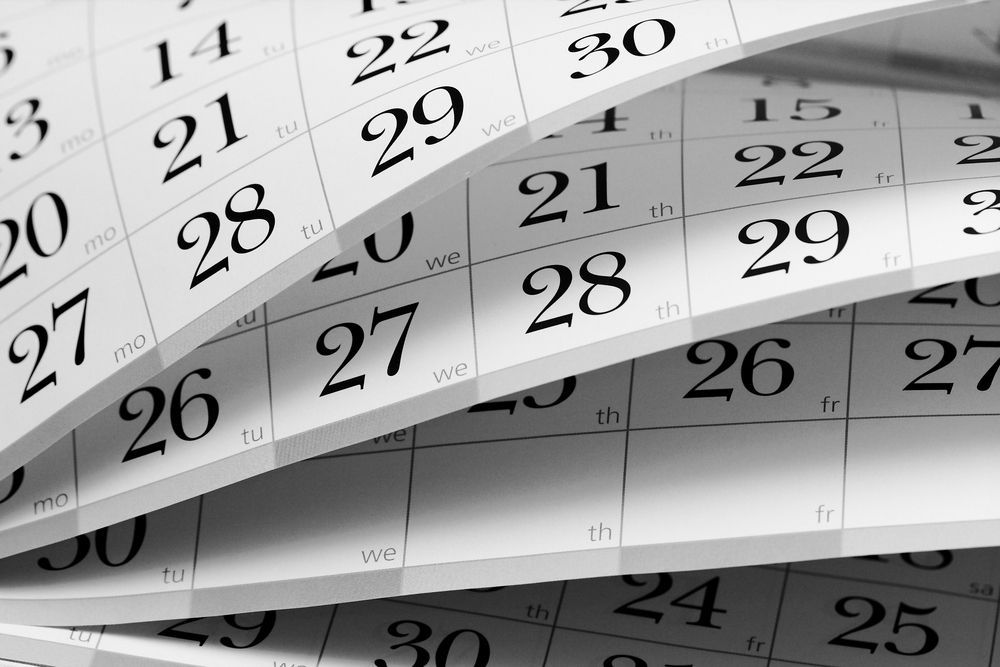
By Jordan Kelly
•
January 10, 2025
Here are the core tenets of good bid management. Bid management, that is, that eliminates to the greatest degree possible, health-compromising stress from the bidding process. (More on that in a future article.) They include but (arguably) are certainly not limited to: 1) The clear and careful assessment of the advisability of pursuing the business in the first place. Proceeding with a bid you’re not qualified for, not prepared for – or that you shouldn’t go for, for some other reason – is setting yourself up for huge stress and no pay-off. I’ve seen numerous companies insist on investing huge resources in a bid they didn’t have a chance of winning. Their pre-sales engagement was inadequate (or non-existent). Their insider knowledge of the prospect organisation was insufficient. They had no idea of the competition’s standing with the prospect. And management couldn’t even truthfully say it believed the company could do the best job for the client in question. Be realistic. 2) Ensuring an early start. A very early start. Steal the lead on your competitors. Give yourself ample time – and then some – to explore all avenues of research – both primary and secondary / direct and indirect. There are some industries in which, if a bidder hasn’t researched the contract/project, the client organisation and the political backdrop in detail at least six months before the release of the Request for Proposal, that bidder is massively behind the eight-ball . . . and should seriously consider the wisdom of proceeding. Certainly, once the client’s tender documentation is released to market and the probity curtain comes down, a bidder has lost all real opportunity in terms of any information still to be gleaned from the client or associated parties. That is, unless that bidder is happy for its potential strategy to be flagged to competitors when its questions are published on the relevant pages of the client’s website for all to read – along with the client’s answers. (Not that that’s the forum for asking anything deep and meaningful, anyway.) 3) Undertaking a comprehensive recap of the debrief associated with the bidder’s most similar, recent EOI / RFP / RFT responses – along with any that may have been submitted to the client in question at any point. Learning from your mistakes is one of the best ways to ensure against a repeat performance. 4) Adequate time devoted to pre-bid strategy sessions. Bidders that whip through these sessions, with silly little 45-minute segments for critical investigations such as competitor analysis, are either naïve, arrogant or both. Probably both. (It’s a great way to give your competitors the advantage, though.) 5) Careful advance consideration of the broad topic areas requiring coverage in strategy workshops, and placement of the right people in the room (and all of the right people). If you don’t have the right knowledge sources at your bid strategy planning sessions, you’ll either end up with an uninformed (or worse, a misinformed) strategy, or you’ll have to run additional sessions. And there goes your production schedule, right there. 6) The running of a tight ship at planning sessions. If a bid leader or bid manager caves into the insistence that bid team members can’t survive an eight-hour workshop without their mobiles and their laptops, they deserve the lack of attention that is absolutely 100 percent guaranteed to result. Similarly, if they allow people to wander in and out of the room at will and cruise back from breaks as they please. At least consider those members of the team who are treating the exercise seriously and respect their commitment by ensuring that others don’t compromise the quantity and quality of the session’s outputs. Insufficient and poor quality outputs = poor quality strategy = poor quality content = bid manager running around like a headless chook at the end of the production schedule trying to make a silk purse out of a sow’s ear. 7) Adherence to schedule in the writing phase through reliance upon a well-researched, well-considered, comprehensive strategy blueprint. Similarly to the above point, one of the primary reasons for the stressed condition of those responsible for chiseling the final production into shape, is that they are faced with a strategy-less and waffly piece of “brochureware”, in place of (what should have been) well-thought-out, well-guided, co-ordinated, comprehensively and accurately answered written response sections. 8) Putting the right people onto the right job. In Think & Win Bids , I write about the four “MOs” (Modus Operandi) or operating style categories that I observe bid team members falling into. There are some “MOs” you simply wouldn’t assign with a certain task if you want the job done with any deal of competence and enthusiasm, and there are others who will relish the very same assignment. There are others who will fall down the rabbit hole and forget how to get back up it, and others who know how to shoot a straight arrow at the same target. And yet others who will do a great job if you need something fast and you’re OK with “shallow” as a trade-off, and others who’ll excel at hard, deep research – but you can forget “fast”. A sharp bid manager will identify and capitalise on the natural strengths of his or her people to ensure the bid stays on schedule, and that a quality output is evolving. 9) Shunning the ‘war room’ concept. If you’ve been following my work, my teachings, and my writings for any real length of time, you’ll know I take every opportunity to get this point across. No apologies for the stuck groove here: If focus is the bedrock of productivity, why would you expect anyone (particularly anyone who’s not a writer for a living) to maintain the degree of concentration required to produce quality copy, whilst sitting in the cross-flow of a variety of different conversations, mobile phone calls, and constant miscellaneous interruptions? If all seasoned writers / authors (certainly all that I know or have studied) can work only in solitude, why on earth would the requirement be any different for someone who doesn’t even write for a living? 10) Ensuring the developing bid documentation is regularly reviewed by the individuals who have had peak responsibility for the production, and the signing off, of the guiding bid strategy. If you don’t want to be summoning all hands to deck to re-write the bid documentation at the 11th hour (i.e. when senior management sees it and questions its poorly reflected strategy), have those with whom the “strategy” buck rests, involved at critical junctures throughout the process. 11) The allocation in the production schedule of plenty of time for editing and re-writing. Similarly to Point 7, if the work of seasoned writers and famous authors is given public airing only after numerous re-writes and multiple rounds of editing, why would a lesser degree of review be required for non-professional writers? 12) Thoughtful and comprehensive debrief preparation. Learn everything you can from your just-concluded bid process and your just-submitted bid documentation, in order to identify all the areas in which you can improve both in the next bid.

By Jordan Kelly
•
January 7, 2025
Listening is learning. We’ve all heard the adage that we have two ears and one mouth. And we know it refers to the wisdom inherent in listening twice as much as we speak. This admonition takes on a whole new definition when it’s applied in the business development and bidding context. Listening is a highly profitable skill. But there are various different types of listening . For example, there’s surface listening, pretend listening and, worse still, self -listening (where you listen only for the opportunities to break in with your own story). It is, however, deep, selfless, customer-focused listening that is the modus operandi resulting in the production of winning bid strategy. This type of listening is characterised by hearing both what is said and what isn’t said, and by seeking clarification. It’s hearing the emotion behind the words, and “walking a mile in the customer’s shoes”. This brand of listening lets you hear things the competitors don’t hear. It gives you insights you won’t get elsewhere. It provides you with new opportunities to customise or tweak your technology to meet the nuances within user groups’ needs. And it endears you to the customer . . . for whom being attentively and genuinely listened to , is likely a rare compliment. Listening Precedes and Informs the Quality Question Effective, customer-centric listening fosters the ability to ask quality questions – one of the most powerful tools in your bid strategist’s kit. In an overarching sense, there are two categories of “quality question”. One is the planned question , and the other is the question you ask on your feet . . . and both require first-class listening skills. A planned question is, of course, pre-determined, while the “think on your feet” category of question forms in your mind as you listen intently to the speaker. To formulate a savvy planned question outline with which to guide a specific customer interaction, first reflect back upon all your past conversations with the client and any other form of interchange that reaped valuable information and insights. Identify the precise point at which you currently sit in terms of your overall information-gathering activities. This will help you identify the nature of the data you need to complete the picture you’re endeavouring to put together. From that point you can determine the actual questions you need to ask, and how to ask them. Now to the type of question you ask as the conversation evolves. Again, the key to asking the highest-value questions is to listen carefully to your conversation partners , being present both to the information they’re imparting and to the emotion behind it. If you’re “people-smart”, you’ll be able to determine when you should be deepening your understanding by prompting the other party with a question designed to bring forth a fact-based answer – and when you should be aiming to have your customer impart more of his sentiments on the topic in question. If you can master this distinction, you’ll get inside both the customer’s head and his/her heart . This will help you appeal to both his/her logic and his/her emotions. And that’s a powerful place to sell from. Why? Because – as individuals, as consumers – we make buying decisions based on logic, and we justify our decisions based on emotion. And to come full circle back to the importance of listening . . . it’s only when you list with both your head and your heart, that you pick up not only the face-value and logical data you need, but also the all-telling underlying emotion/s.
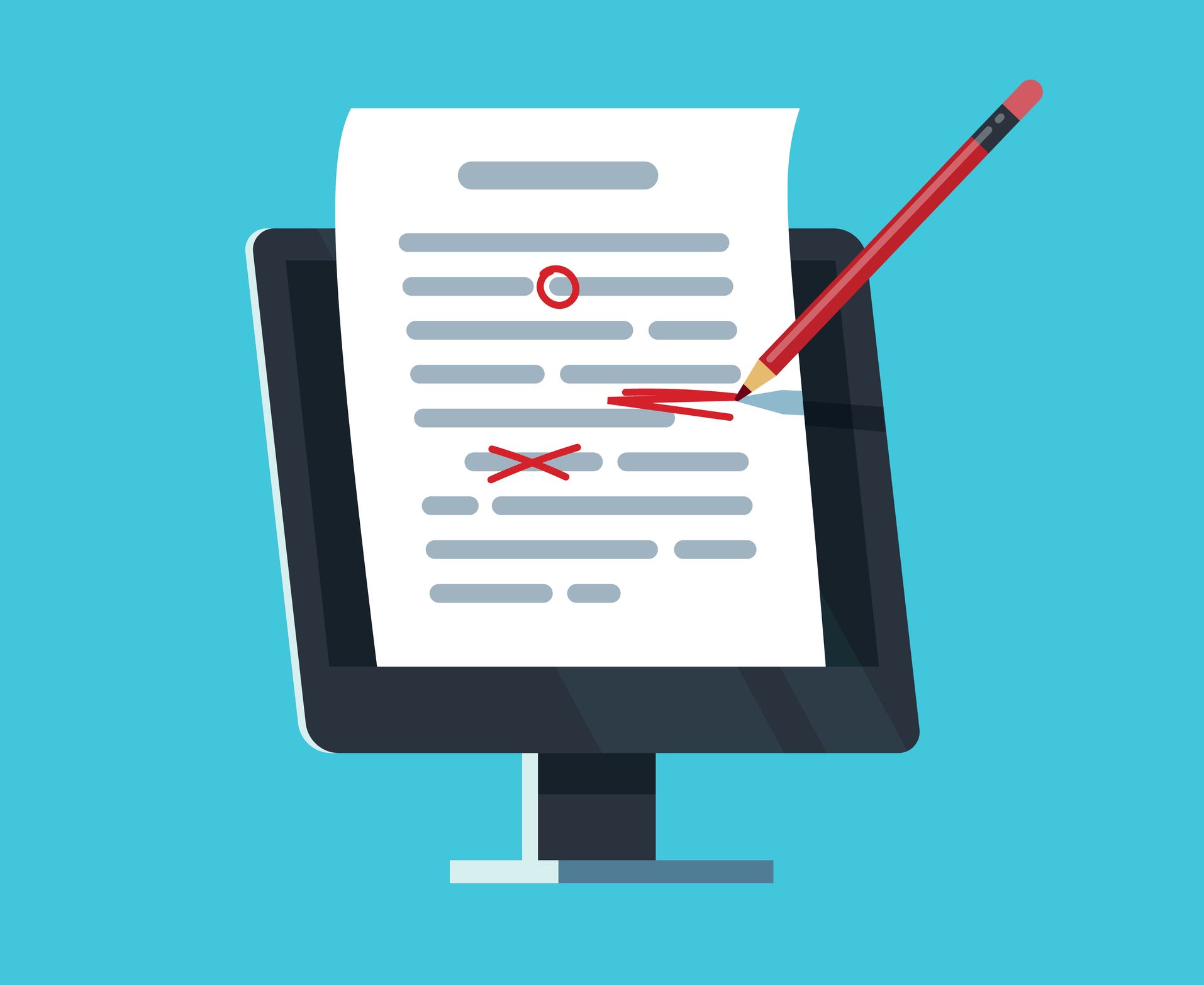
By Jordan Kelly
•
January 3, 2025
The checkpoints in Part One of this list focused primarily on ensuring substance and strategy in the written submission. The points in this – Part Two – checklist relate directly to the quality of writing and editing. Bid writers and contributing subject matter experts should ask themselves: Are my sentences and paragraphs of a reasonable (and preferably, a varied) length? Are my sentences complete? Have I ended paragraphs and started new ones according to a clear progression of logic in my material? Have I been clear and concise? Can I cut out any unnecessary words? Have I written to express, rather than to impress? Have I avoided flowery and/or fashionable language? Are all my facts relevant? Have I explained any facts and observations that, from the evaluator’s perspective, require it? Have I checked my copy for spelling and grammatical errors (particularly those I know I commonly make)? Have I avoided the over-use of industry jargon? Have I explained any jargon, where it won’t be familiar to the evaluator? Have I avoided the use of my company’s own internal-speak and other terminology that the evaluator may not fully understand, and therefore may have to guess at? Have I read my copy allowed to a disinterested party, to experience the valuable phenomenon of “hearing it through another’s ears”?

By Jordan Kelly
•
December 30, 2024
Here’s a random grab of quick thought-nuggets from my book, ’ 50 Essential Bid-Writing Tips ‘: A clear strategy paves the way for clear articulation. As in strategy, so in articulation. Never put pen to paper on an important, high-value submission without first producing a documented bid strategy as a blueprint. And make sure that strategy document is user-friendly. Think and write in terms of benefits, more so than features. Be cognisant of the distinction between benefits and features i.e. the benefit results from the feature. Join the dots for the client organisation and its evaluation team members; don’t leave them to extrapolate the benefit from the feature for themselves. Important: This involves thinking deeply about the client’s contract and associated needs. Answer the question. Don’t devolve into evasive writing because you don’t know how to answer a question, or because you have insufficient material to address it with substance. Have the integrity to correct the problem at its source, seeking out the information you need, or going back into the planning room if your content is lacking as a result of an incomplete or incoherent strategy. Don’t let a lack of substantiation erode your credibility. One of the most common flaws in Expression of Interest (EOI) and Request for Proposal (RFP) responses and, indeed, any other form of bid is the proliferation of “empty” claims – claims made with no attempt to provide specific points of proof or any other form of substantiation. Largely unintentionally – but very effectively, all the same – these convey an arrogant, salesy tone that screams: “Look, just trust what I’m saying, OK?” Frequently, bids peppered with these come across as just the reverse: Untrustworthy. Process, don’t parrot. You’ve heard the old adage, “A consultant is someone who asks for your watch, tells you the time and charges you for it.” A similar concept underlies the common tendency to either repeat verbatim, or to minimally re-phrase, large tracts of the client’s own EOI or RFP documentation. That demonstrates neither any conduct of your own research, nor employment of your own thought processes. Be client-focused in both your content and in your writing. Be client-focused from the beginning. If and whenever possible, use your choice of opening words to let the client know that your answer and information is going to be framed in the context of his interest, his needs, his contract, his priorities, and his concerns. Avoid the temptation to slip into sales-speak. Don’t be tempted to go into marketing copywriter mode. It’s not required. Worse, you’ll come across as an amateur, if copywriting isn’t your day job.

By Jordan Kelly
•
December 26, 2024
The greats of literary history have much to teach the writers of today. No-one, however, could benefit more from becoming a student of these masters of the written word than the commercial bid writer. This fun - yet highly insightful - little read is an assembly of the enduring and pithily expressed wisdom of over 100 authors, strategists, philosophers and other accomplished figures. It features 47 smart little lessons from yours truly, on Research, Thinking & Strategy , on Writing , and on Editing, Re-Writing, Practice & Perfection – reinforcing the timeless advice of these sages. ‘ Bid-Writing Lessons from the World’s Greatest Authors ’ contains gems like: What an ancient Chinese military general (and author) can teach you about strategy, and how to use those learnings to outsmart and outmanoeuvre your competition. The criticality of understanding the difference between strategy and tactics (a distinction your competitors probably don’t understand, and one you can capitalise on). What the Bible says about the need for ensuring you have a wide range of sources contributing to your bid strategy. Two world champion boxers offer the self-same admonition: Understand the importance of a consistent, yet fluid , strategy. Hemingway said most people never listen; Shakespeare also stresses the wisdom of listening over speaking. Peter Drucker says the most important thing in communication is to hear what isn’t being said (it’s also the way to develop the most client-centric strategy possible). Henry Ford and Richard Nixon agree: Very few people truly think . Einstein admonishes: Never stop thinking. Twain and Pascal comment on avoiding self-centricity (which is rampant in a lmost every bid, tender and proposal ). What Shakespeare and Emerson say about a bidder or tenderer not being blinded its own light. What Shakespeare, Thoreau and F. Scott Fitzgerald have to say on the topic of knowing your reader . . . and the foolhardiness of writing about something you don’t understand. Substance and substantiation: Why the greats say writing comes more easily if you have something to say. Kipling’s famous, timeless quote on how to ensure you identify and include all the relevant facts in everything you write. Famous French poet and essayist Charles Peguy says one writer tears his words from his guts, while another pulls them lightly from his overcoat pocket. Which is best, and which type of writer are you? Chandler equates a certain speed with quality of output. Fast or slow, and why? W. Somerset Maugham speaks of style . . . and why you shouldn’t try to adopt one. Stephen King on the use of long words instead of short ones . . . as relevant to bid writers as to great novelists. Hear it direct from the master of suspense. 1000 words buys you the Lord’s Prayer, the 23rd Psalm, the Hippocratic Oath, a sonnet by Shakespeare, Lincoln’s Gettysburg Address and several more pieces of iconic literature. Why do so many submission section contributors ramble? More opinion in the short copy versus long copy debate. A classic quote from Mark Twain that highlights the need for planning word count-restricted response sections even more carefully than non-limited sections. Samuel Johnson makes a point about the transparency of writers who plagiarise and imitate. Shakespeare on writing with purpose – one of the primary keys to a strong and compelling submission. Whoever said, “Being a good writer is 3% talent; 97% not being distracted by the internet” chose to remain anonymous. That’s a shame, because they have a great message for bid teams. What Hemingway, Michener, A. Bronson Alcott and Mark Twain all have to say about first drafts. The magic of editing: All the greats agree on this one above all else.

By Jordan Kelly
•
December 24, 2024
In the almost two decades I’ve been conducting pursuit leadership, bid strategy and bid writing consulting work, there are some basic issues that continue to show up across all industries’ submissions. The following are some of the most common observations / recommendations I make when furnished with a cross-section of a new client’s (historic) submissions to provide commentary on: A bid is not a brochure. Ironically, (what I call) “brochureware” copy is just as likely to flow from the keyboards of technical and other subject matter experts, as it is from marketing personnel. Marketing and sales support personnel are prone to producing this type of “empty, generic and salesy” copy when they don’t have a solid, detailed and user-friendly bid strategy blueprint to inform and guide their content. However, technical staff and subject specialists (engineers, for example) just as readily fall into the same trap – albeit they do it for a completely different reason: they’re under the impression that they are expected to produce marketing-style copy. (They’d do better to simply articulate their content in their normal fashion, even if this were more of a dry and academic style. At least there would be more chance of some real substance appearing in their written contributions. Each new bid is a process in its own right. A bidder must view the preparation and production of each bid as having nothing to do with the last. Each bid must be based upon its own unique strategy which, in turn, is formulated from dedicated research into the background of the project or contract being bid for and the prospective client. That makes templating and importing concepts and content from previous bids a nonsense. Start earlier to (a) go beyond face value, and (b) get a jump on the competition. Becoming adept at satisfying the many unwritten and unspoken needs (including information/reassurance needs) of a prospective client necessitates the identification of those needs in the first place. This listening between the lines, and deeper level of research, is rarely achieved when the bid strategy process isn’t commenced until the client’s Expression of Interest (EOI) or Request for Proposal (RFP) document is released. An Executive Summary is neither a covering letter nor a sales front-piece. The Executive Summary is exactly that: a summary . . . a summary of the key themes of the overall submission, and a summary of the proposition itself. With rare exception (or any), has any Executive Summary I’ve ever seen been both directly connected with and into the core content, and yet also functioned adequately as a stand-alone summary. More often than not, they are a “We are pleased to submit our proposal for ETC / It is our pleasure to respond to ETC” unnecessary second covering letter, or an inappropriately self-promotional piece. ( Fully ) Customise Staff Profiles Properly and diligently customise staff profiles and Curricula Vitae. This is rarely done – or rarely done thoroughly. Further, beware of superlatives and highly subjective language. All claims should be specific and measurable, and consistent with claims in the main body of your EOI or RFP response. (One submission I received wrote of two project delivery team members’ “50 years’ combined experience”. When I reviewed their CVs and did the math, it turned out the true figure was little more than half of that.) Write – or at least edit – case studies to reflect their specific relevance to the procurement in question. Leaving the evaluators to determine all points of relevance between your submitted case studies, and the product or service being sought by the prospective client, is a lazy approach – and it comes across that way, too. Case studies can be a powerful supplement to a submission, and if you’re allowed their inclusion, you should maximise their impact by drawing every point of relevance with the client’s / customer’s project or procurement, and associated needs / concerns / priorities. Don’t undermine your submission with poor grammar, poor editing and typographical errors. It would seem logical that, if a bidder is submitting a response for a project or a contract worth in the tens or hundreds of millions, the least investment they’d make would be the services of a good editor. Yet, either they haven’t availed themselves of an editor, or that editor wasn’t particularly “good”.

By Jordan Kelly
•
December 19, 2024
As tenderers, we’re acutely aware of the first half of the evaluators’ role: to identify the best match for the target client’s needs (and to do so within reasonable budgetary parameters). However, because we’re so engrossed in producing a bid which will convince them that we are that “best match”, we often overlook the second half o f the eval uators’ job: to justify their selection. It’s actually two different processes . . . at the very least at the level of the subconscious. This is where the savvy bid team goes further than its competitors . . . by providing ready-made ammunition for the evaluators when they are asked to support their recommendations. Whether they are consultancies who must answer to their clients, or engineers and technicians who must answer to senior executives, or senior executives who must answer to their boards, or politicians who must answer to their constituencies, all selectors – at some point – will have to present a case for their decision. It behooves you and your bid to help them. The Principle in Action Let’s take the following as a quick case study: One of my clients – early in my specialisation in this field – embarked on a “must-win” bid for the telecommunications infrastructure subsidiary of one of Australasia’s major construction and engineering companies. Although part of a huge group, the subsidiary itself was a relatively small, stand-alone operation. Its competition (widely viewed as the front-runner for the project) was a publicly-owned telecommunications behemoth. My client won the contract – the largest win in the history of that small but highly progressive organisation. Now . . . here’s the fascinating part: The media release announcing the decision told us everything we needed to know about why we’d been selected . . . and largely in our own words! How had that happy result eventuated? It eventuated not only because of the extensive (secondary and primary) research we conducted into the target client’s environment and the compelling strategy we formulated . . . but also because the way we articulated that strategy had resulted in highly credible, authoritative content. This quality of content had instilled the selectors with the confidence not only to rely upon our information in making their decision, but also to communicate it onwards to their own key audiences. Six Key Component Processes Here we see the value of six prior processes, if conducted well: 1) Thorough and careful research at the secondary-source (i.e. indirect) level , in order to identify the big picture framework and parameters within which the procurement in question, sits. 2) Carefully planned and executed primary (i.e. client-facing) research , to identify the client’s greatest priorities, concerns and other “hot buttons” – both those openly voiced, and those held at a deeper, lesser articulated level. 3) Unadulterated pull-through and documentation of the findings of these research exercises and activities. 4) Formal documentation of the bid strategy – the bid’s “blueprint ”, if you will. (This is immeasurably superior to the standard practice of throwing up bullet points on flip sheets, papering the workshop room walls with these, and then trusting that the “strategy” will shake itself out of the resulting mosaic . . . and ultimately leaving it to the writing team to figure it all out.) 5) Production of a writer’s guide, or writers' guides for each Section/Schedule of the Response, to (a) ensure the next level of “pull-through” i.e. from the strategy to the submission document, (b) to guide the required answers to each of the client’s questions, and (c) to provide key phrases and concepts for appropriate and strategic appearance within the context of each answer/Schedule. 6) Editing, check-back and executive approval of each Schedule, at each level of editing/approval (including senior executive) with direct reference back to both the Strategy blueprint and the relevant writer’s guide. These six “macro-level” steps give you the very best chance of a client’s evaluation team reading your submission and feeling like they recognise themselves and their own inputs in your proposed offering or solution. It is the degree to which you achieve this, that is the degree to which you feed them the fodder they need to support their selection . . . of you .


